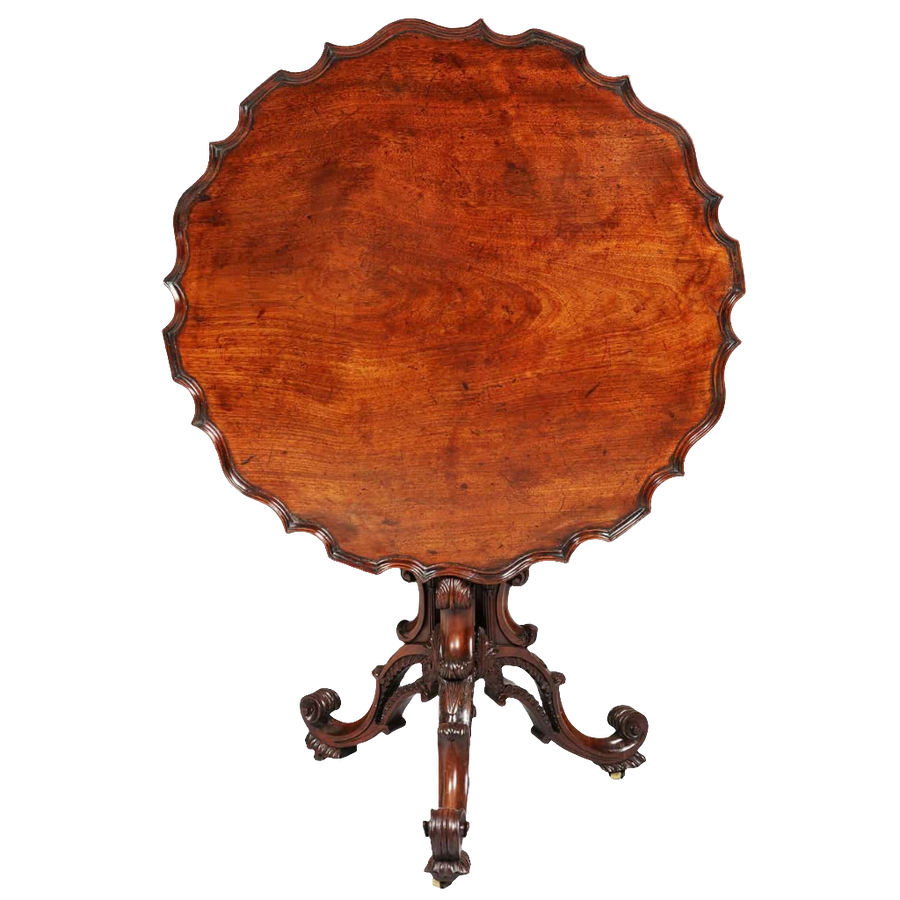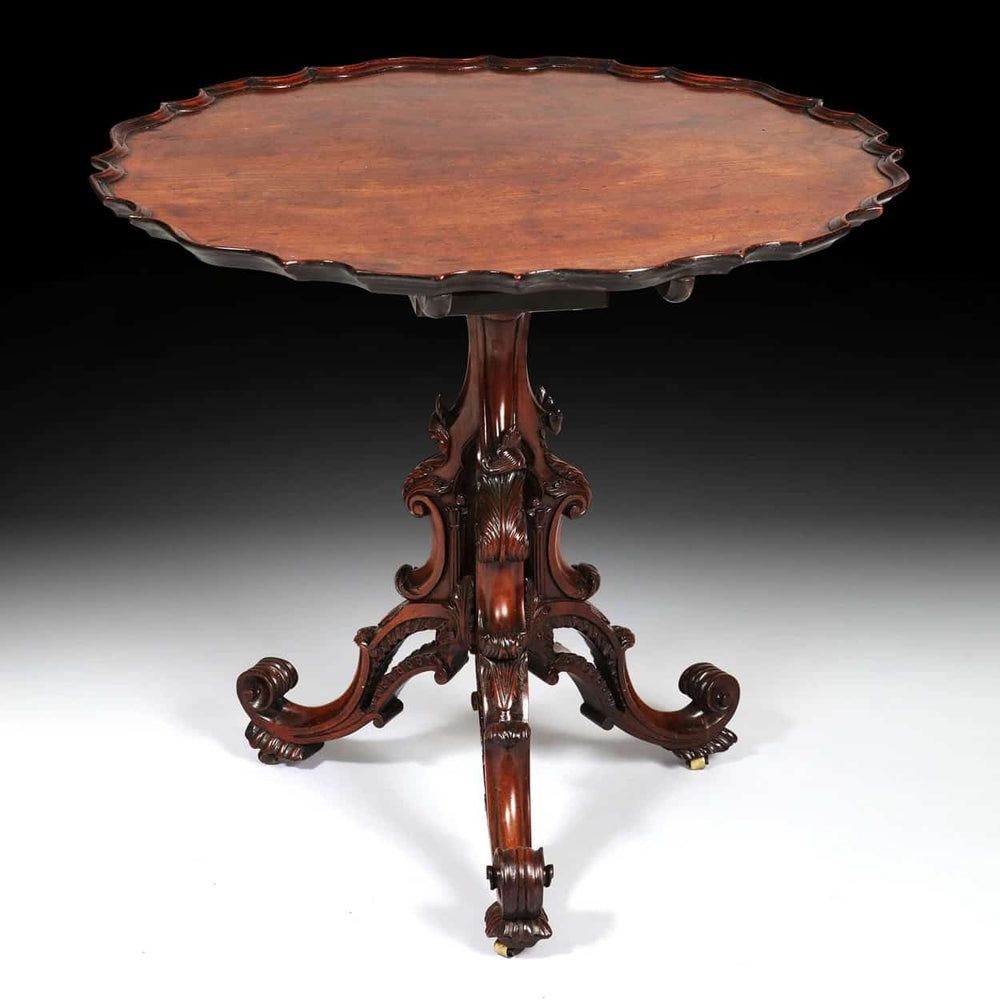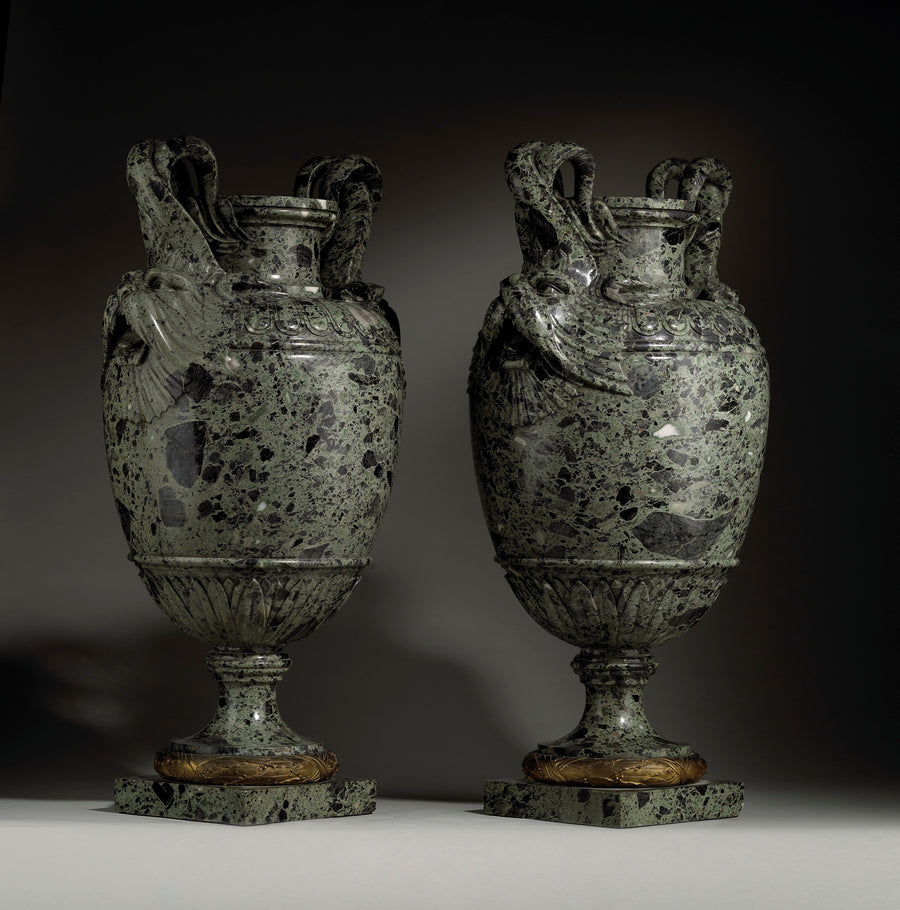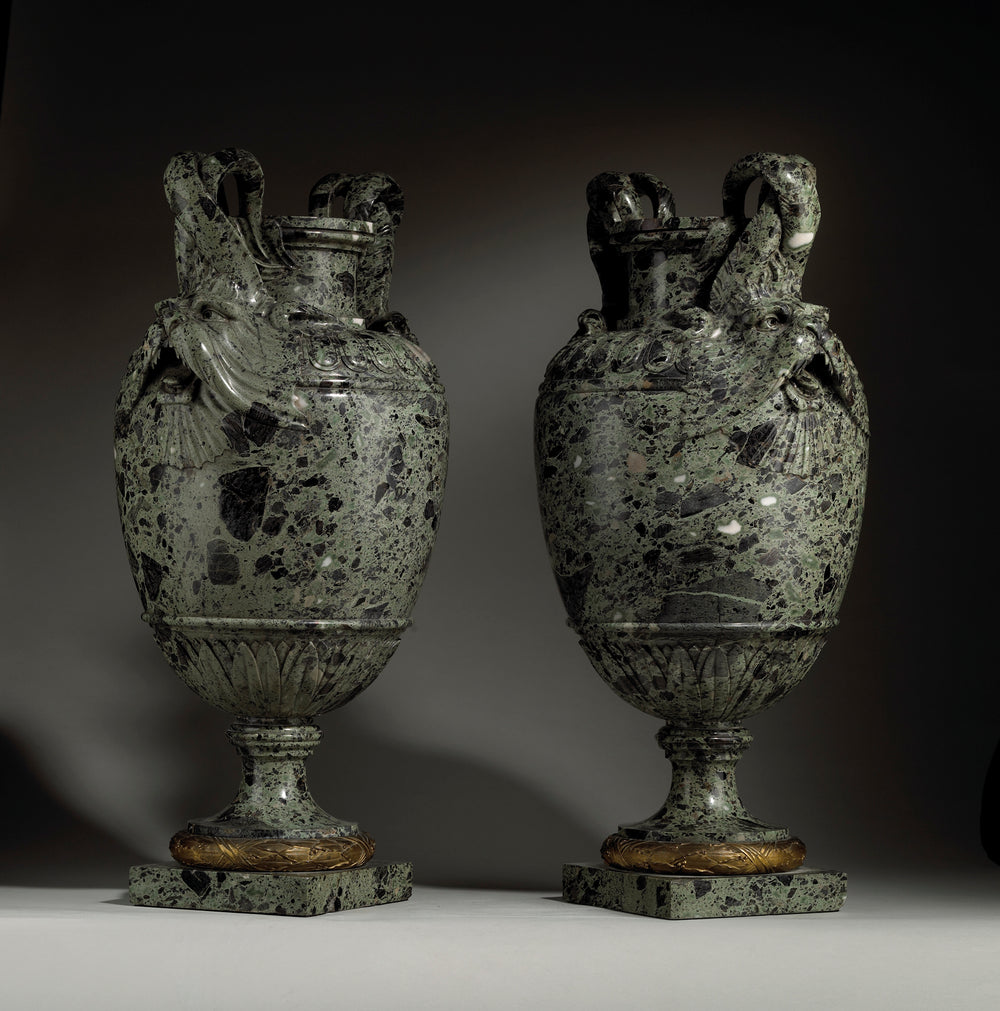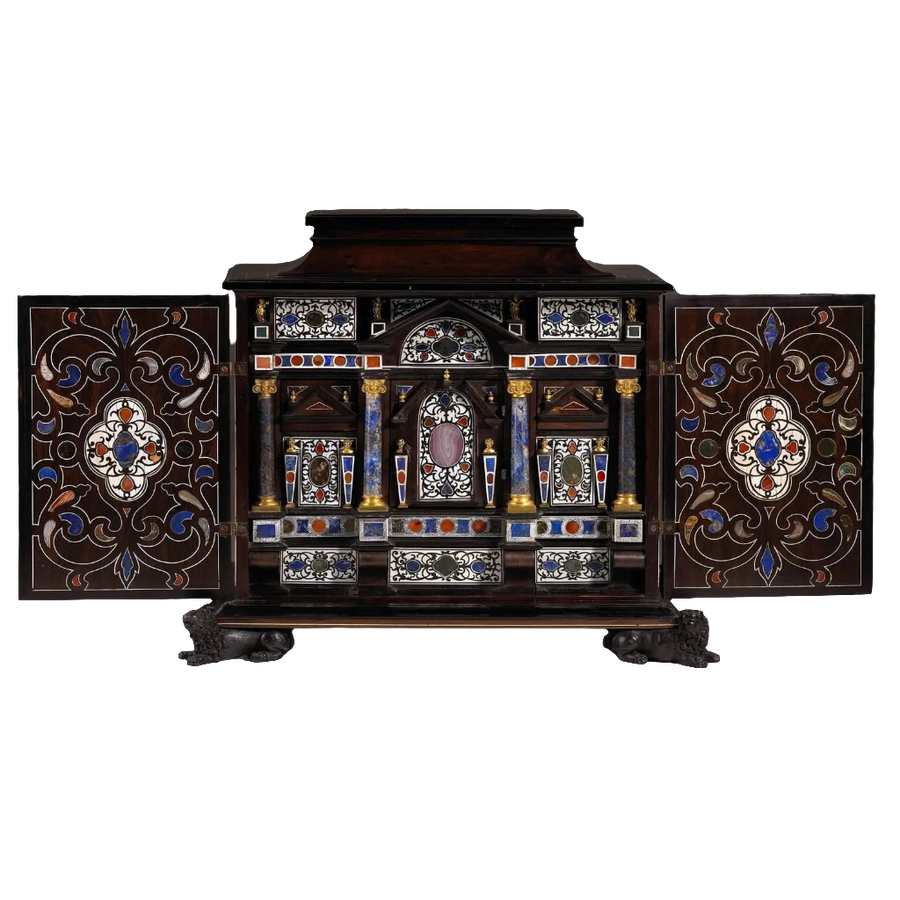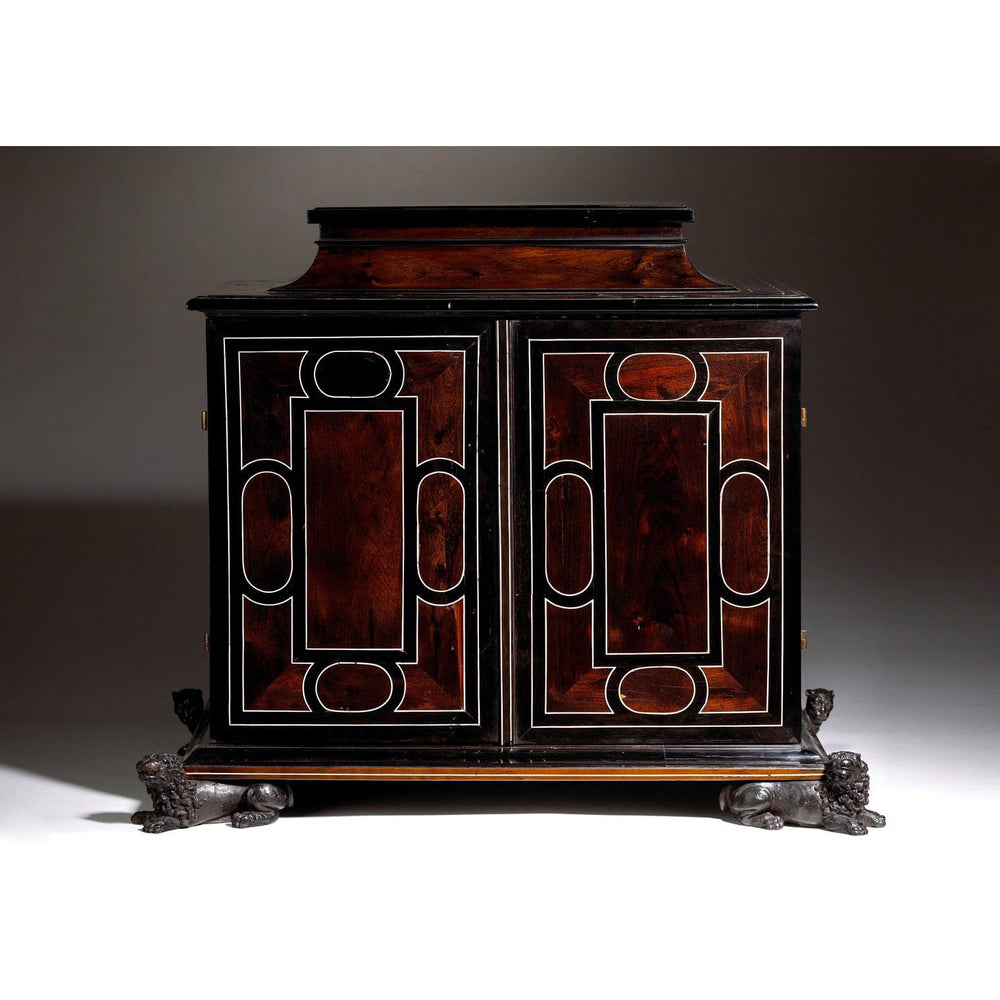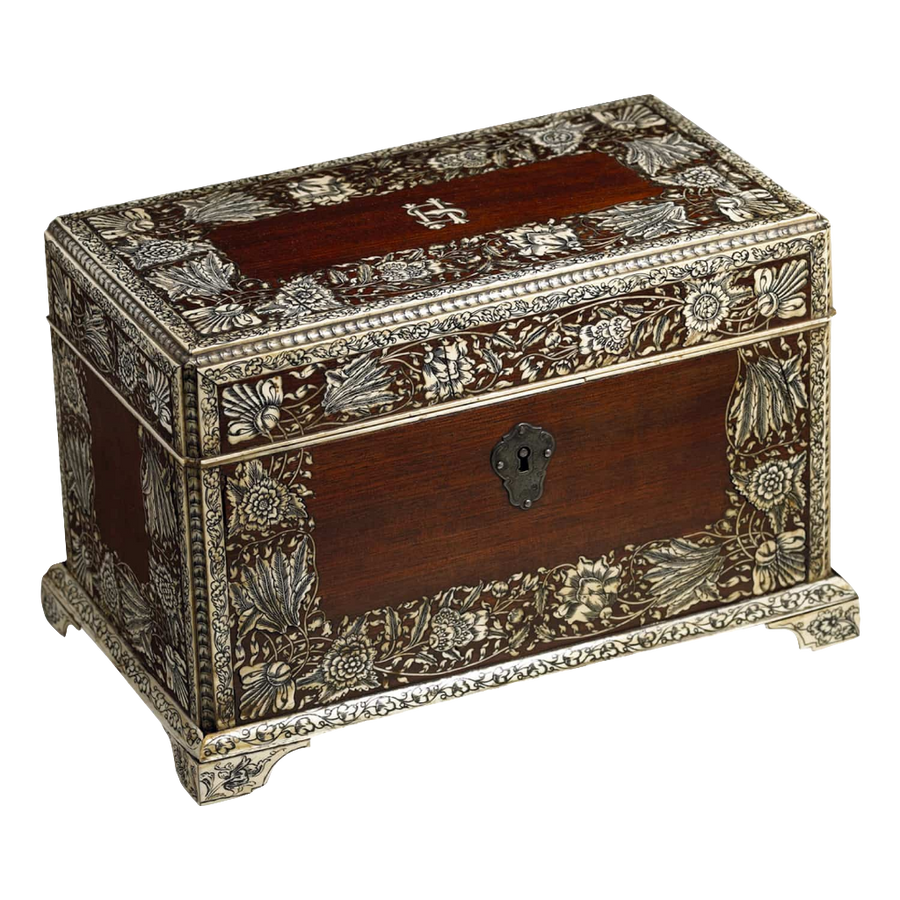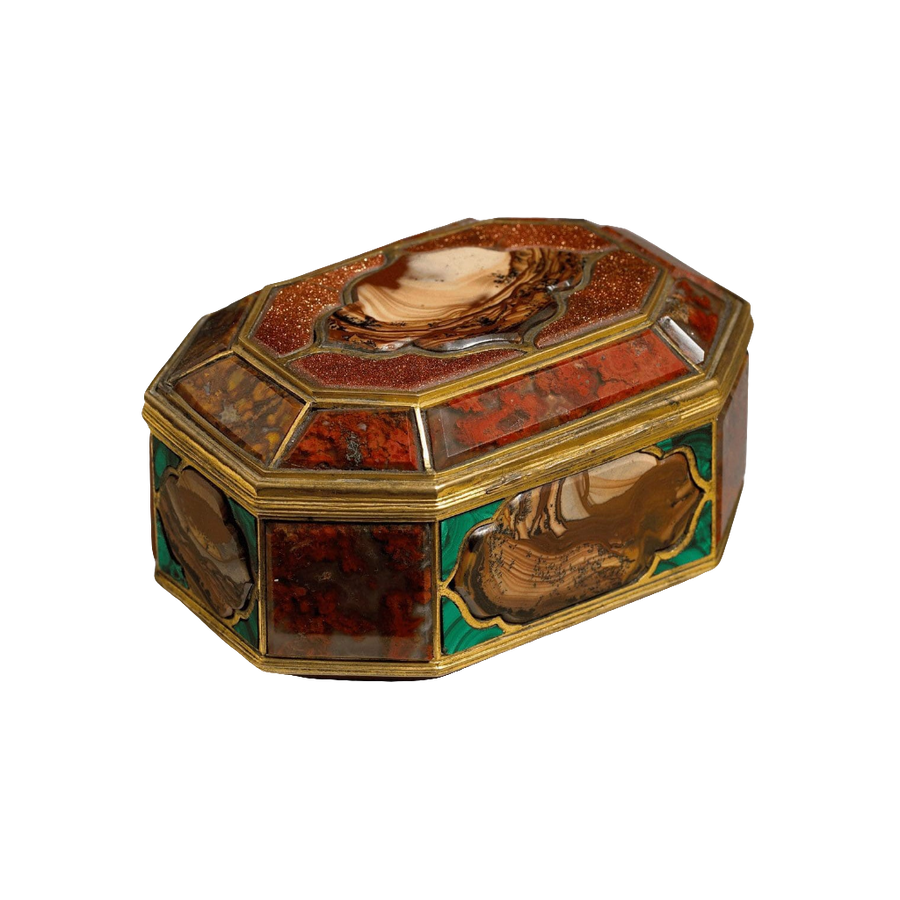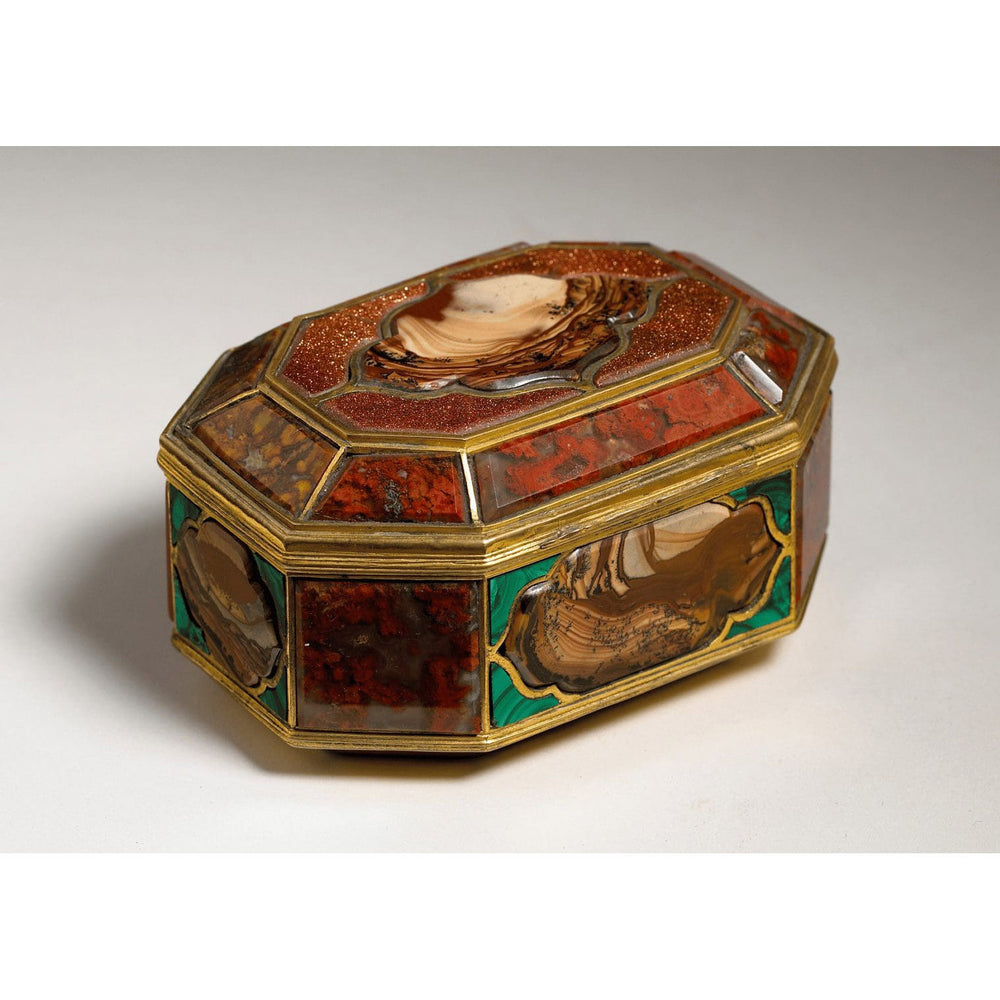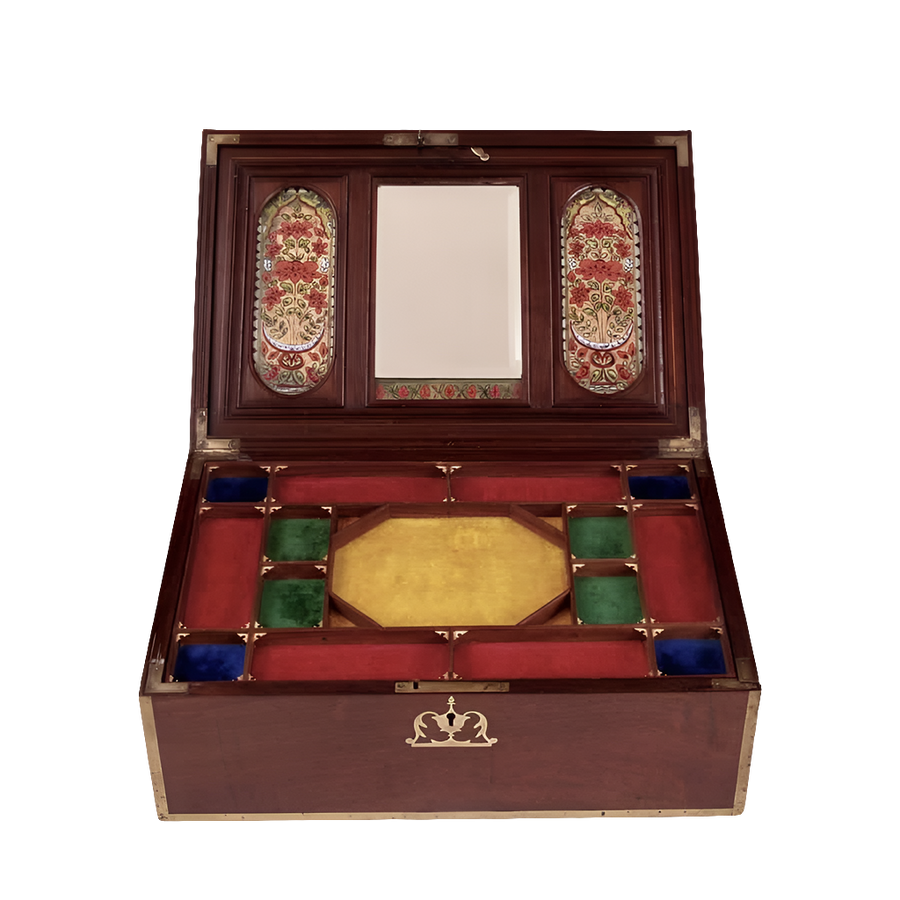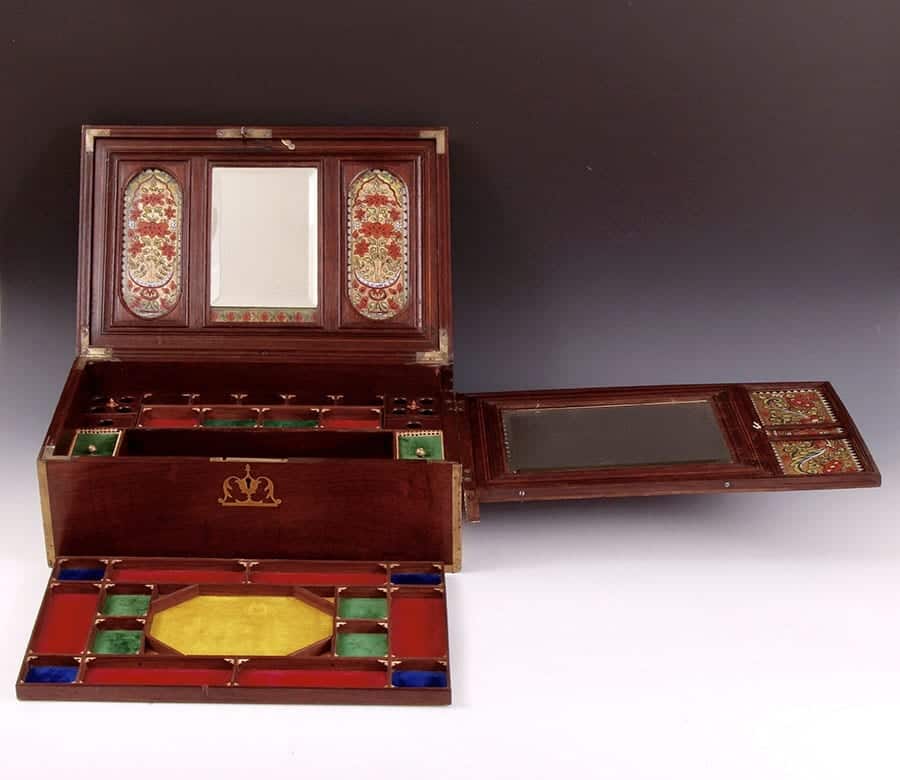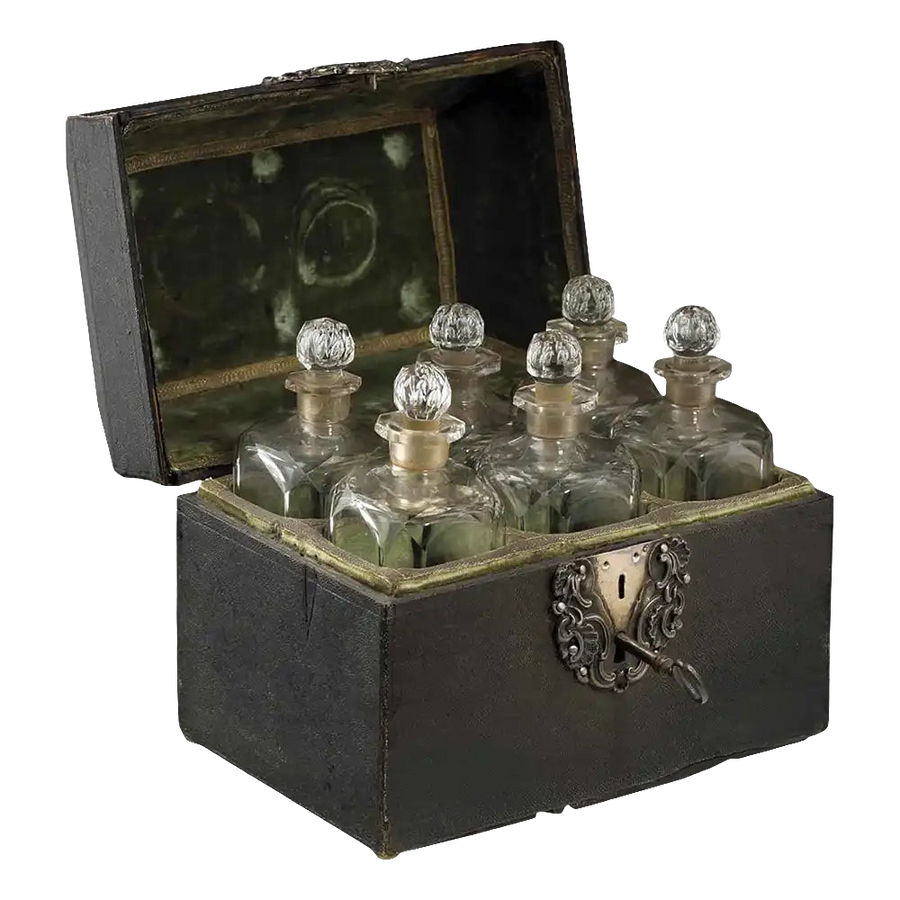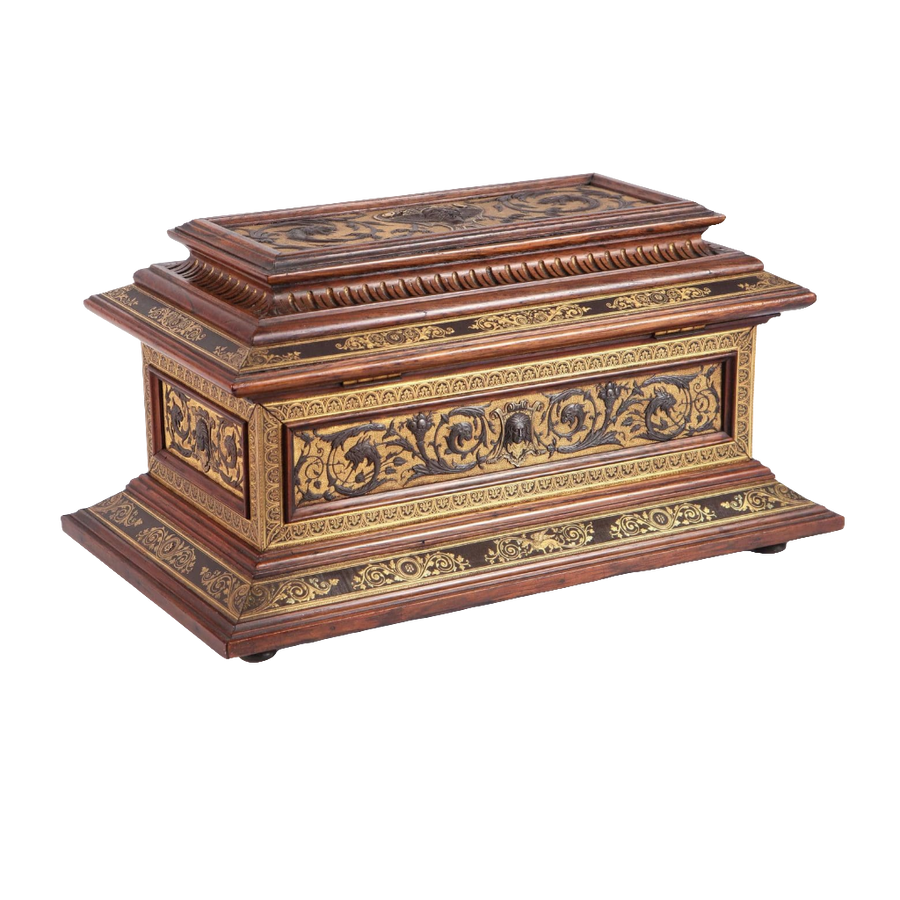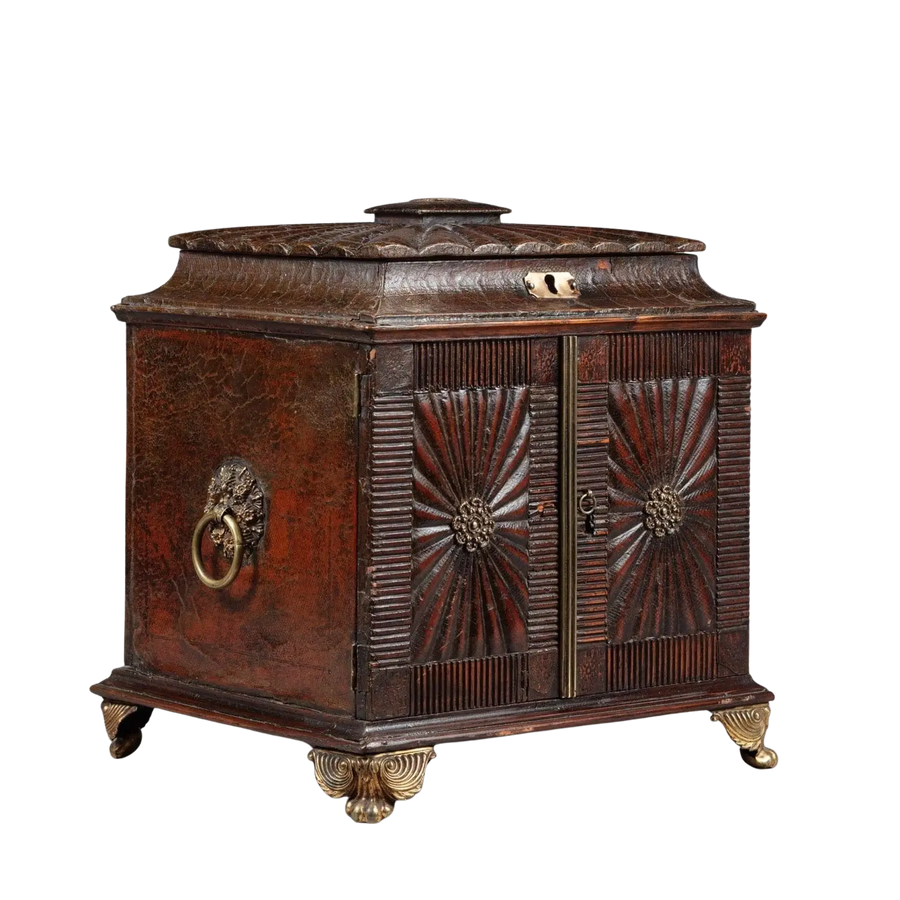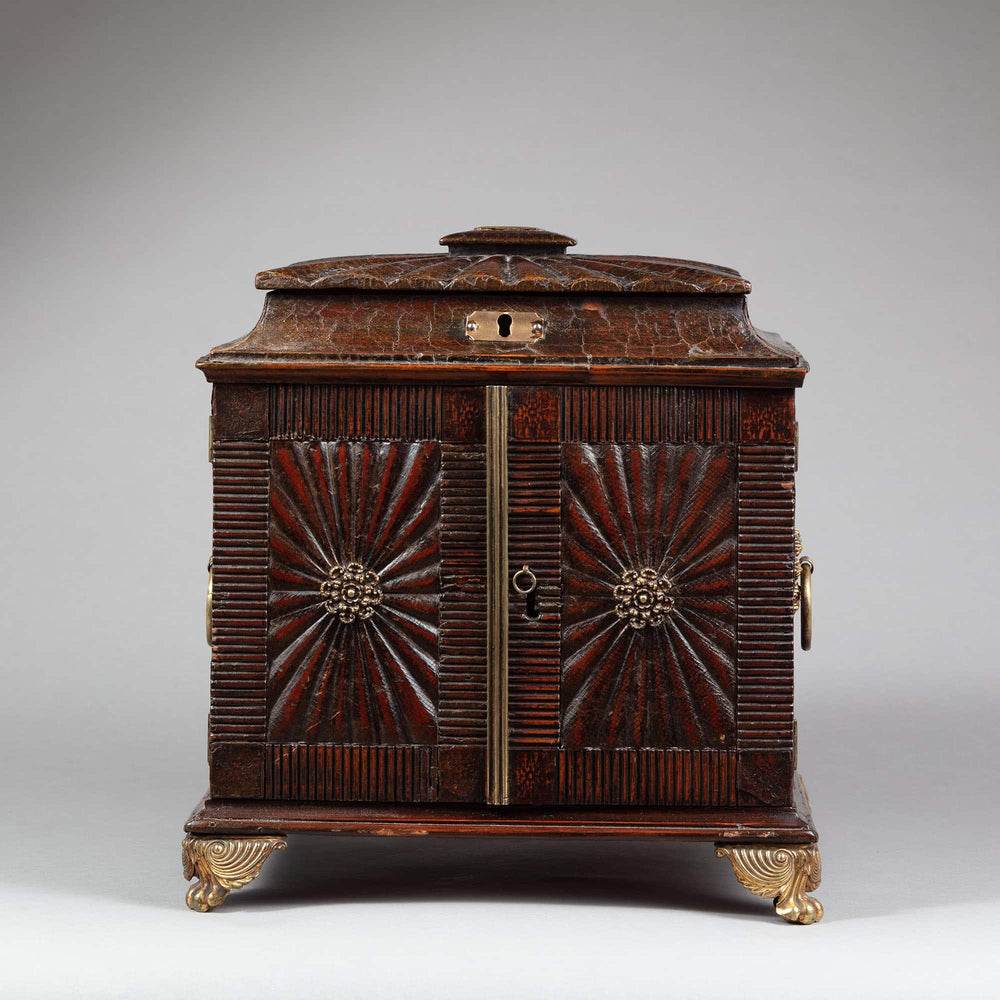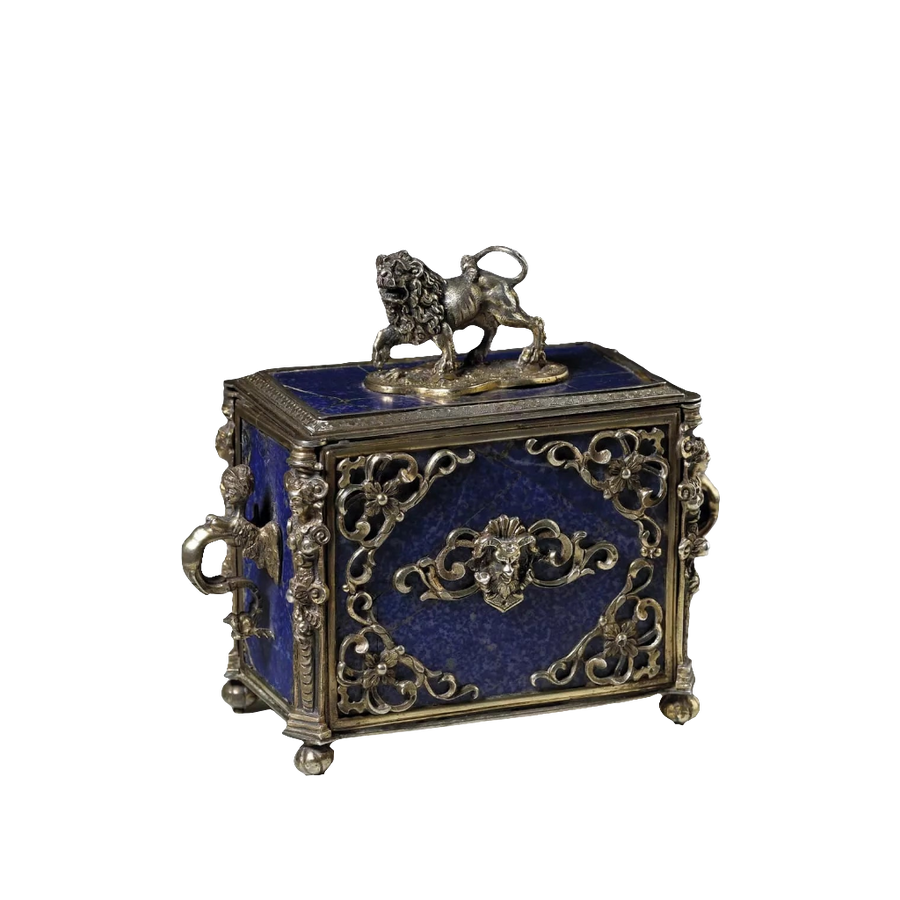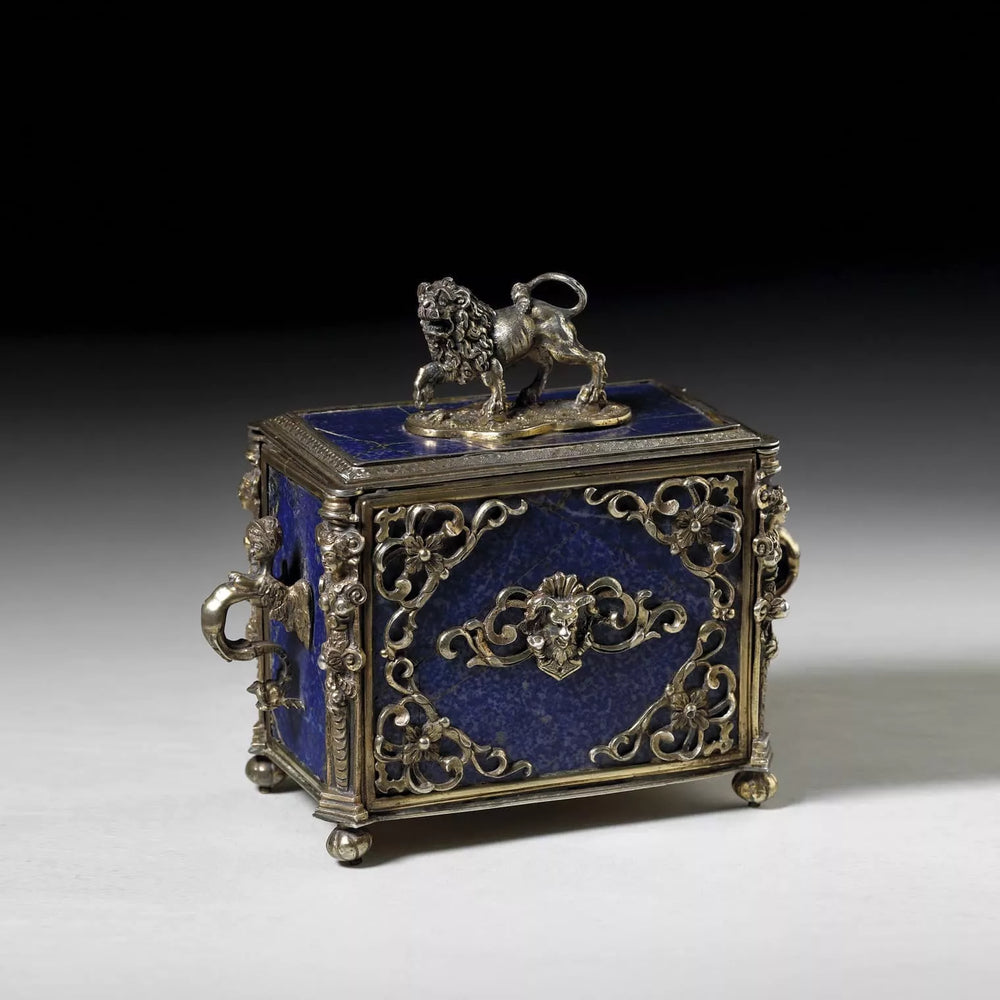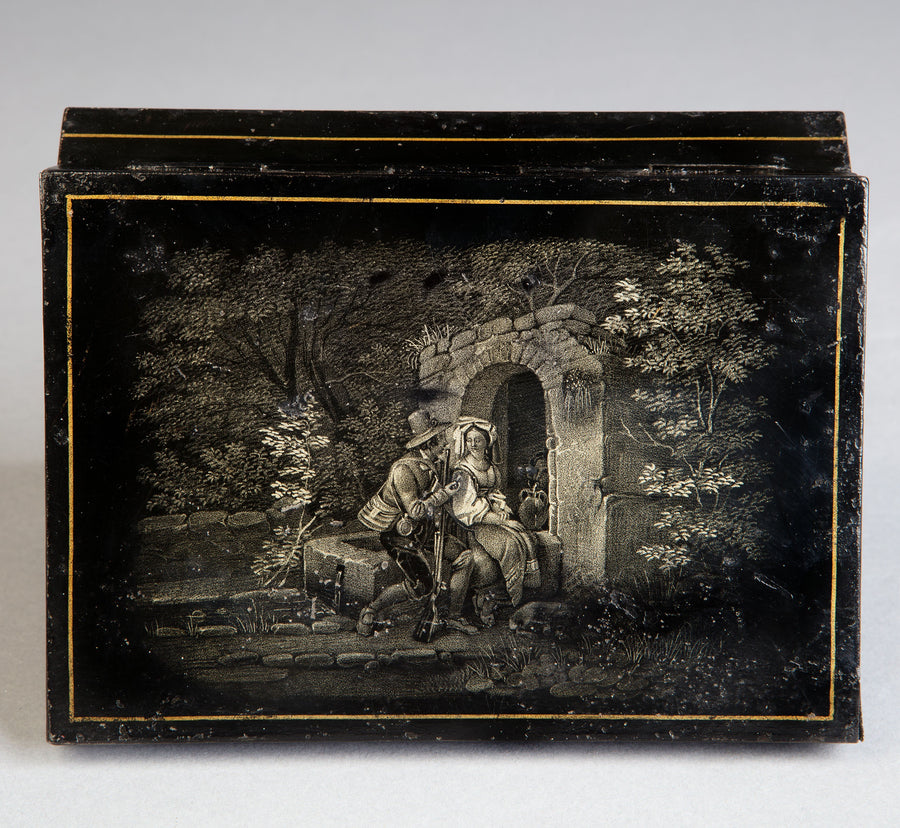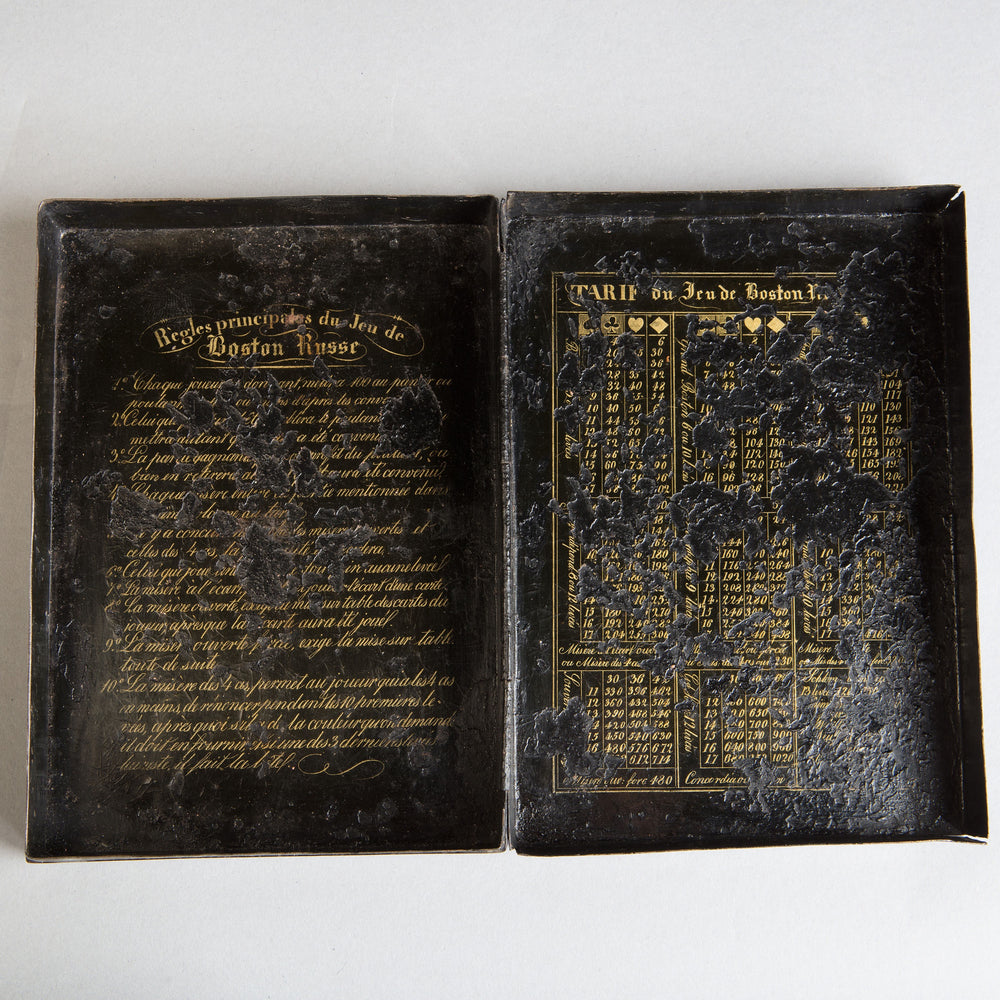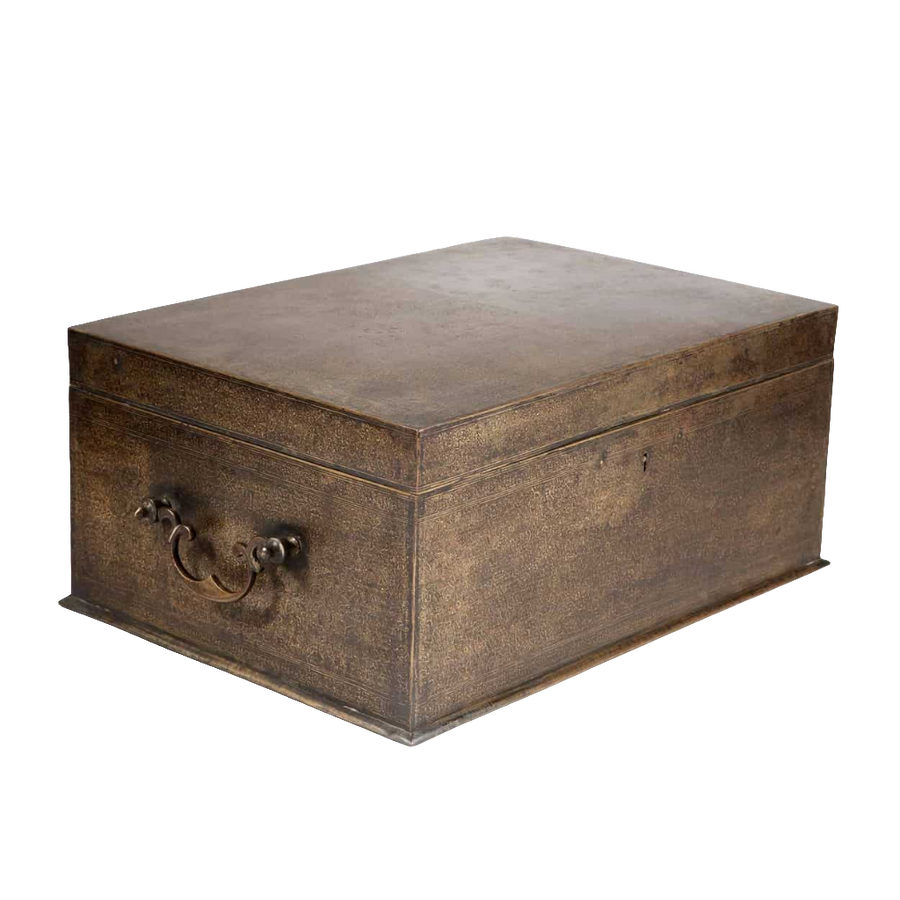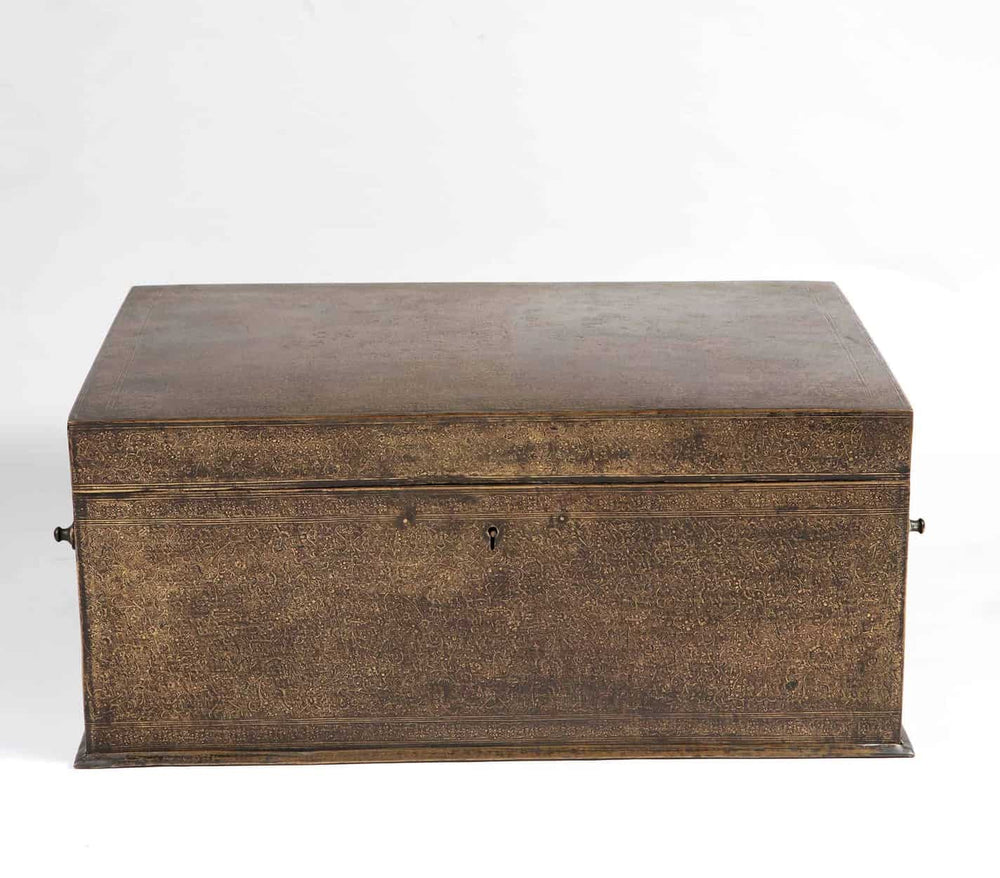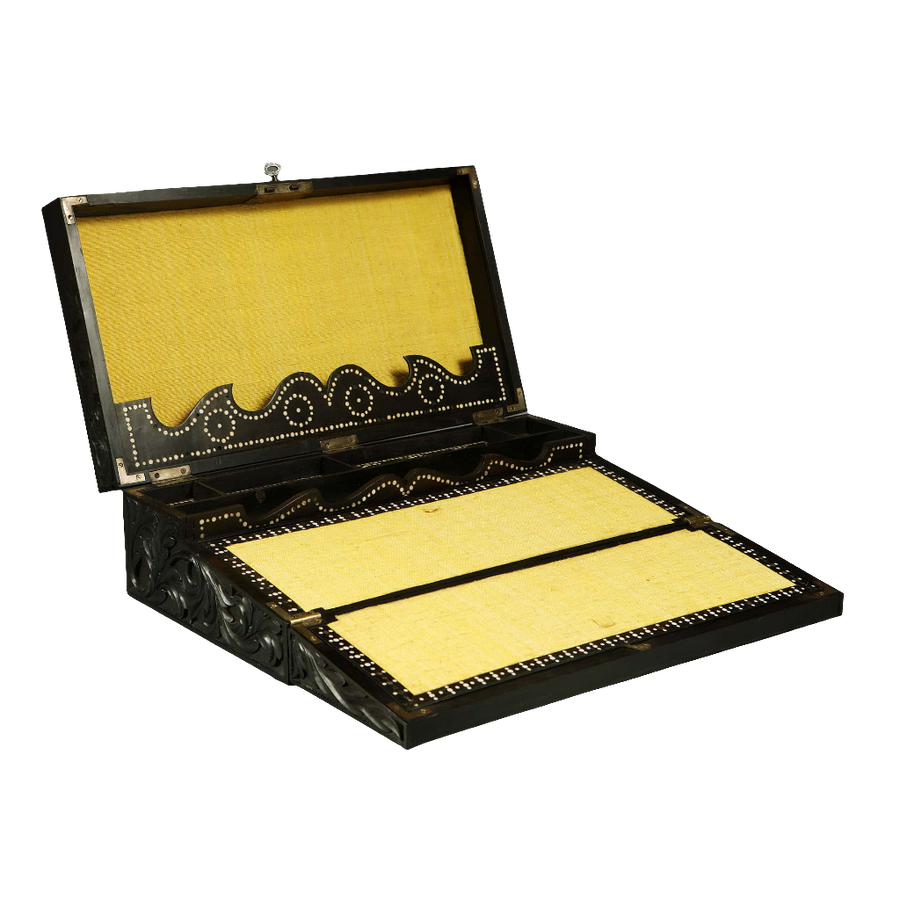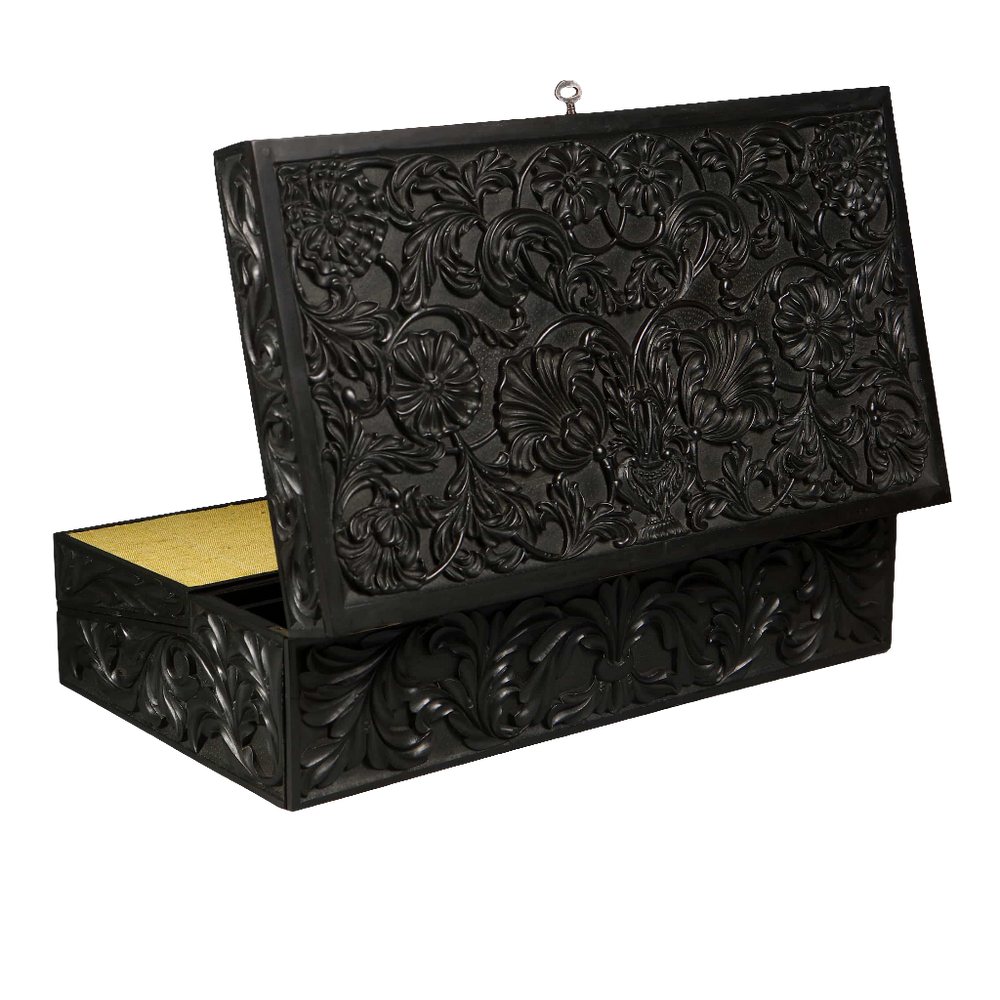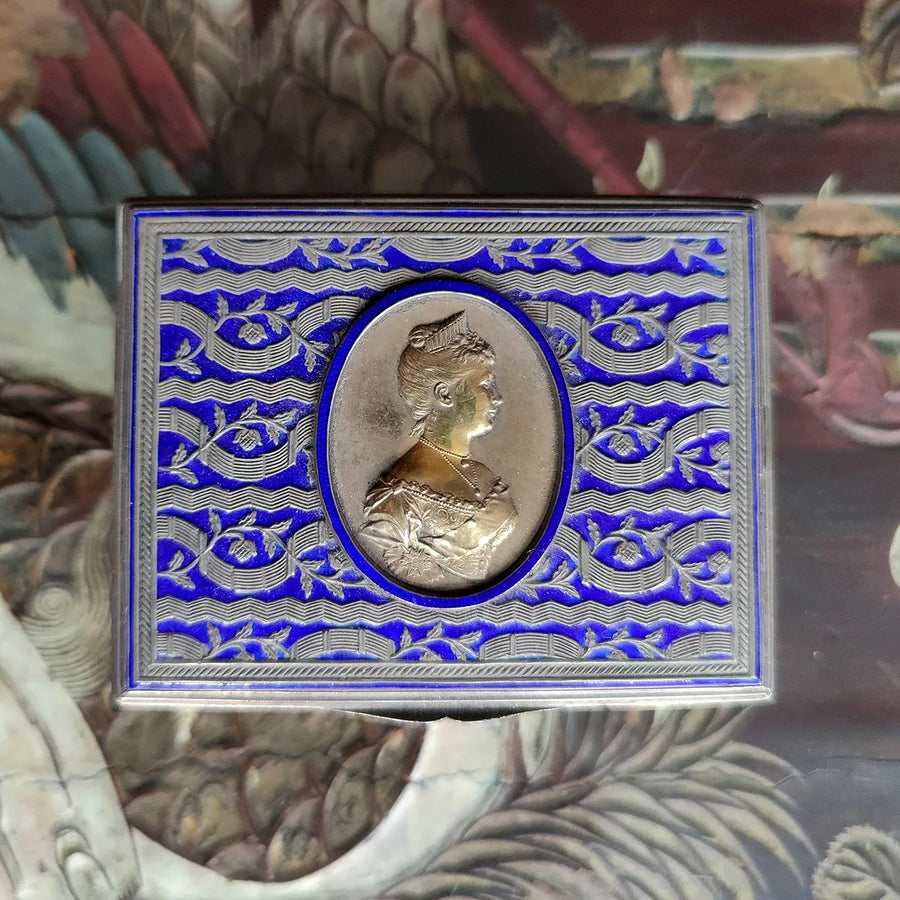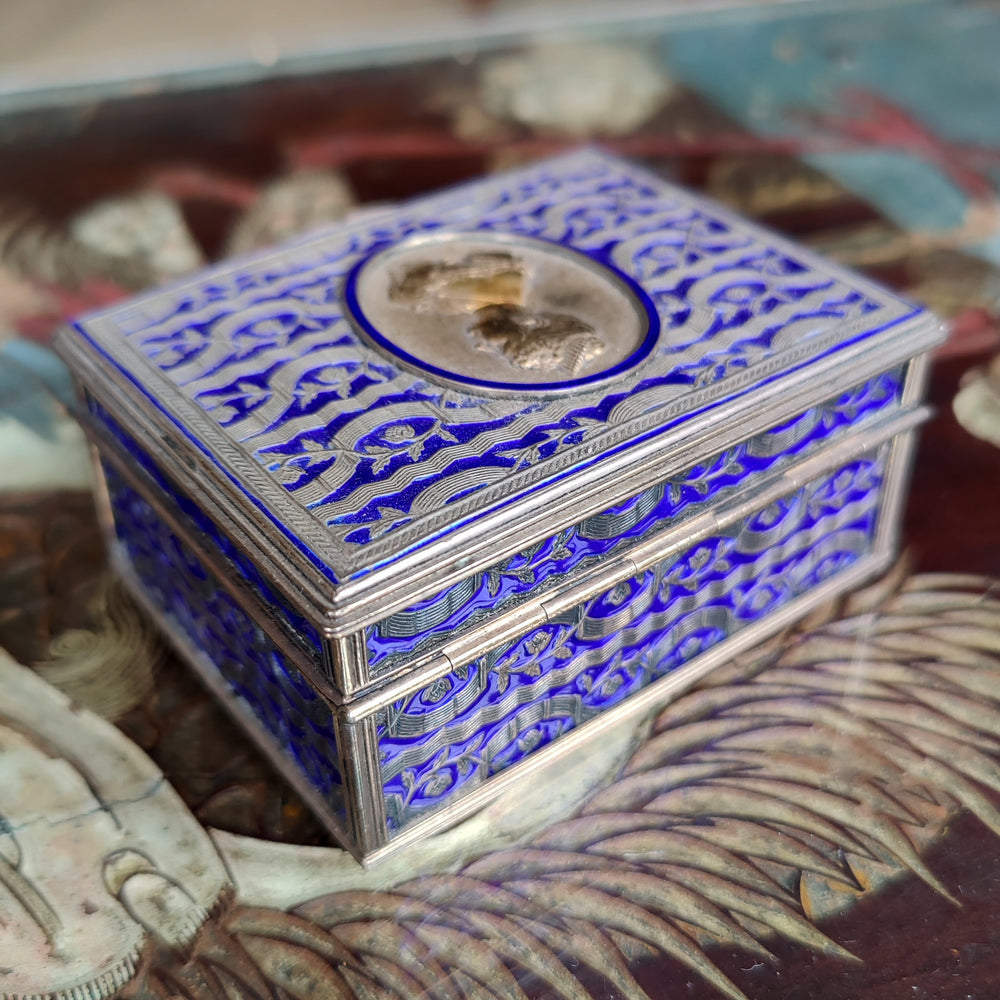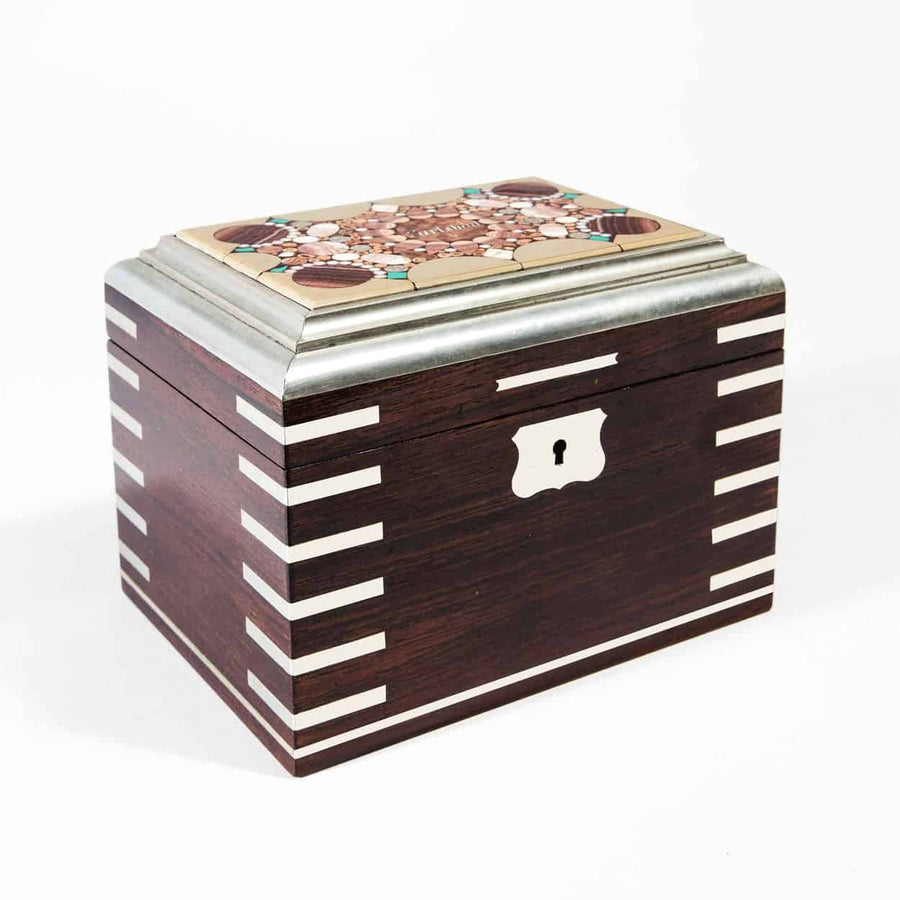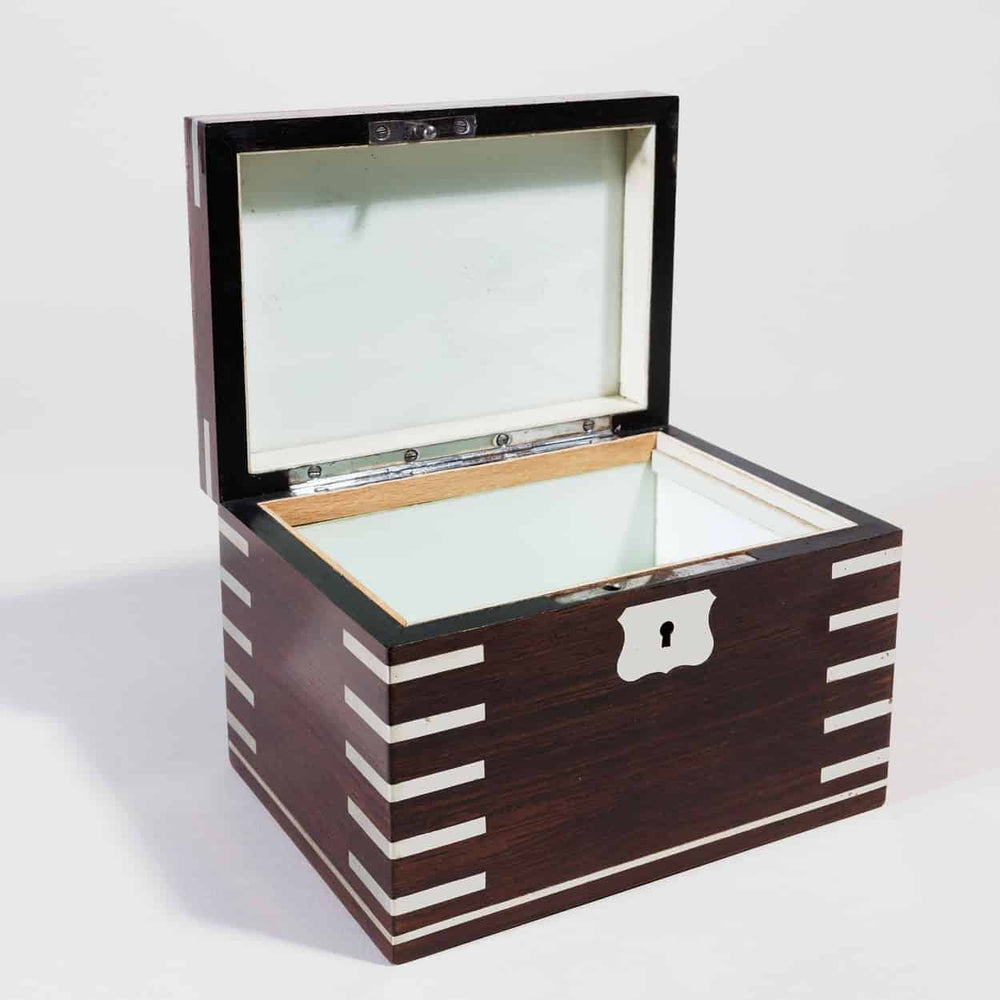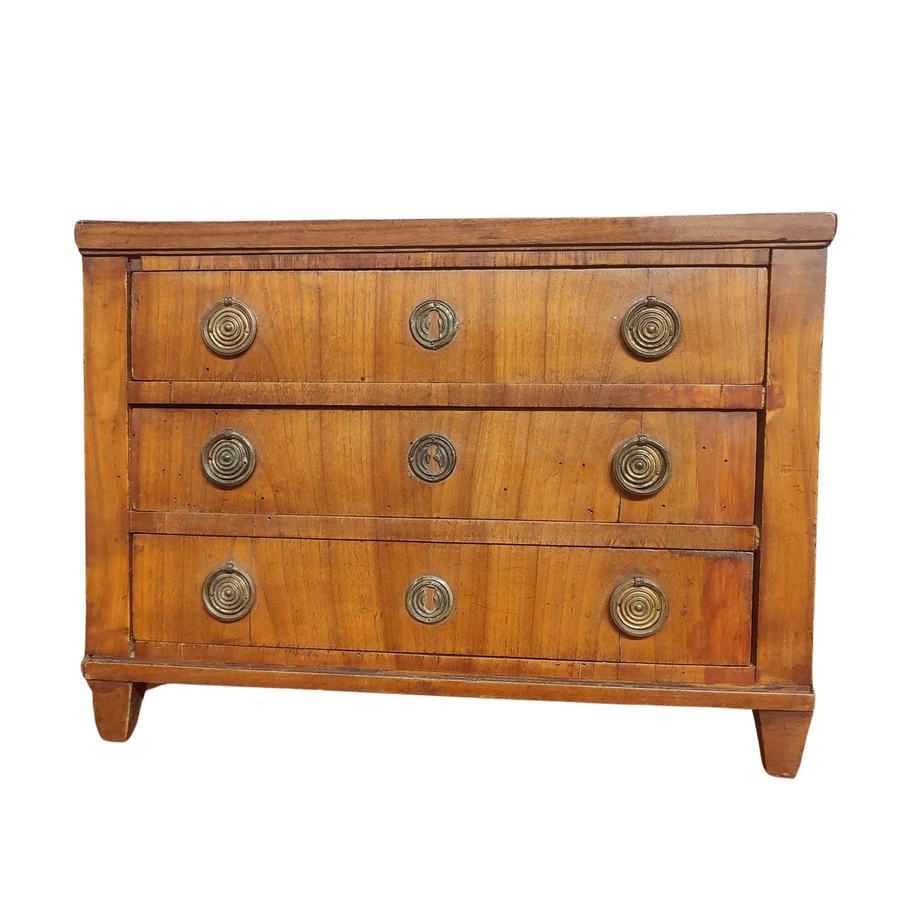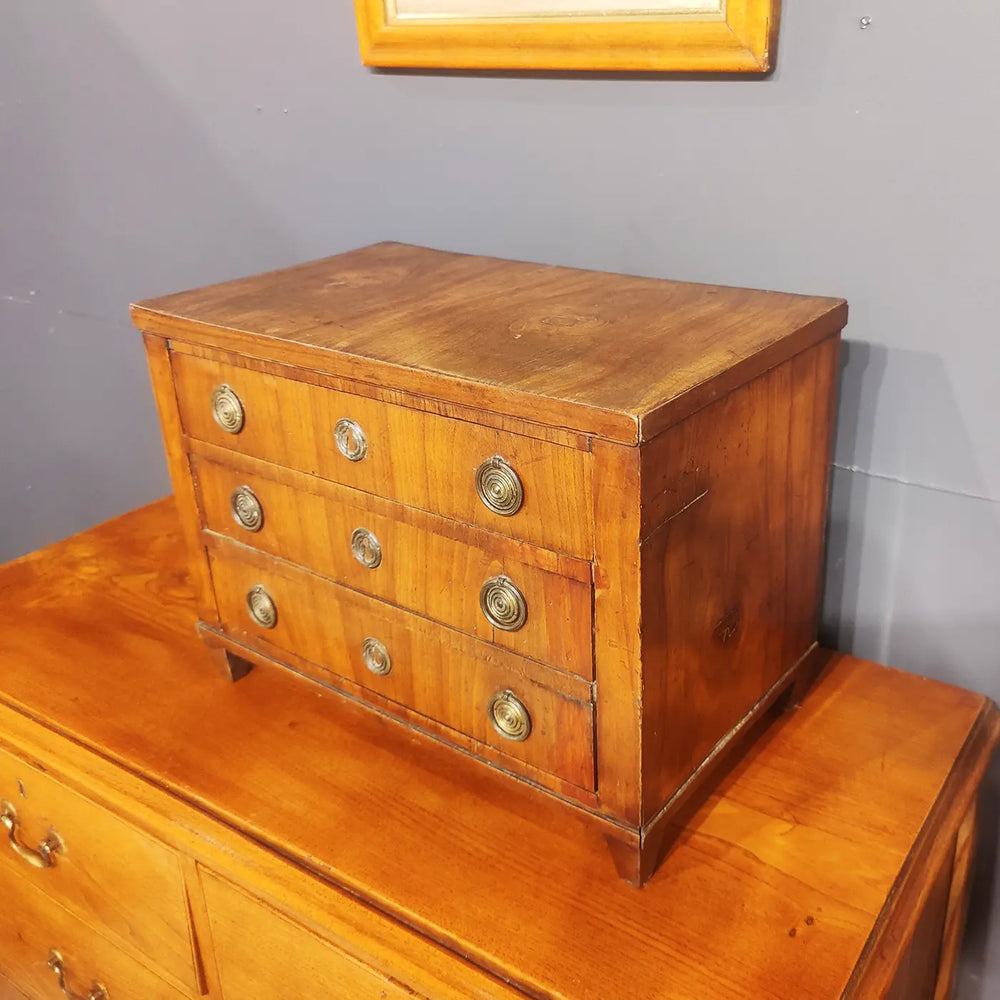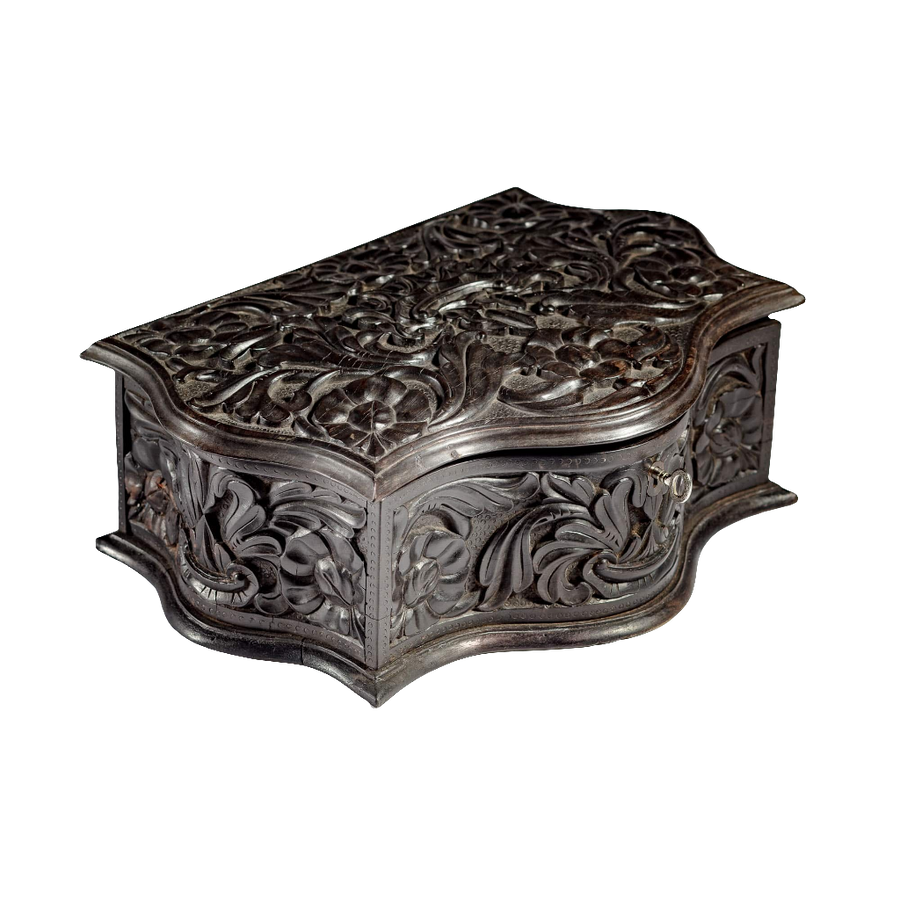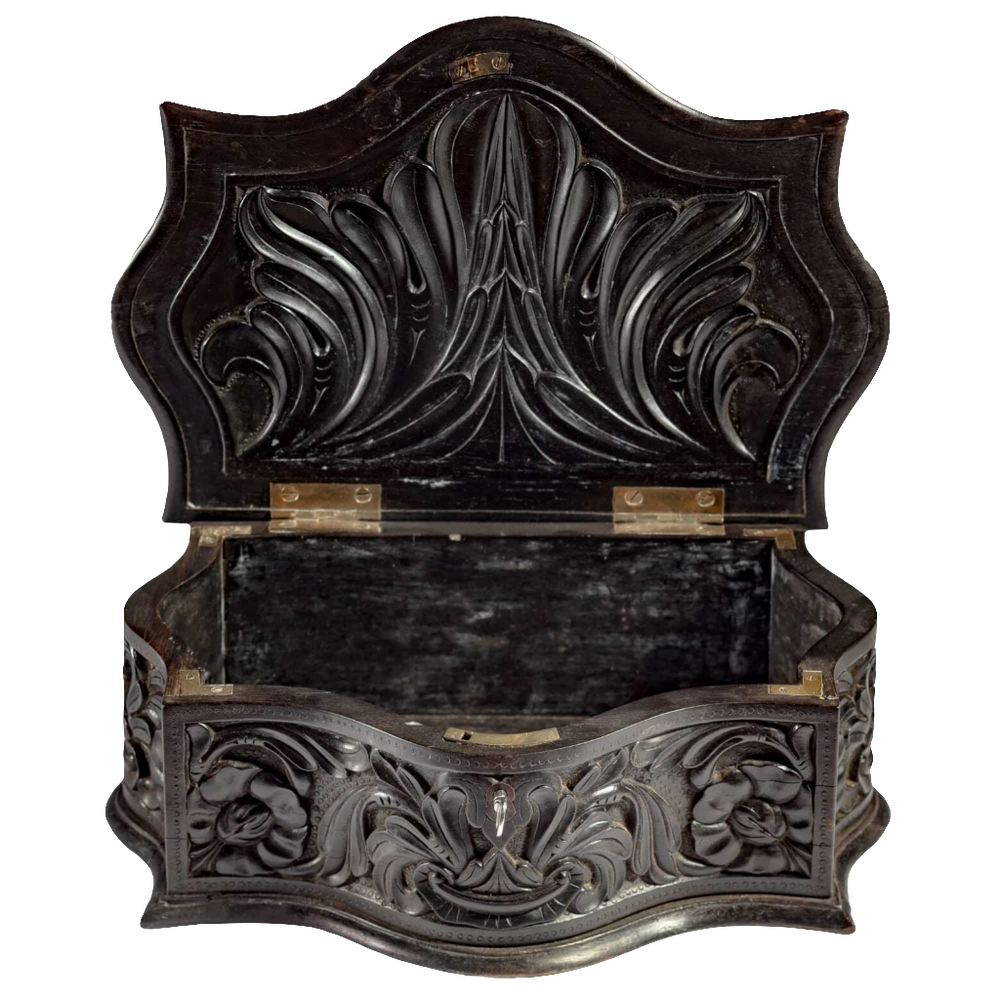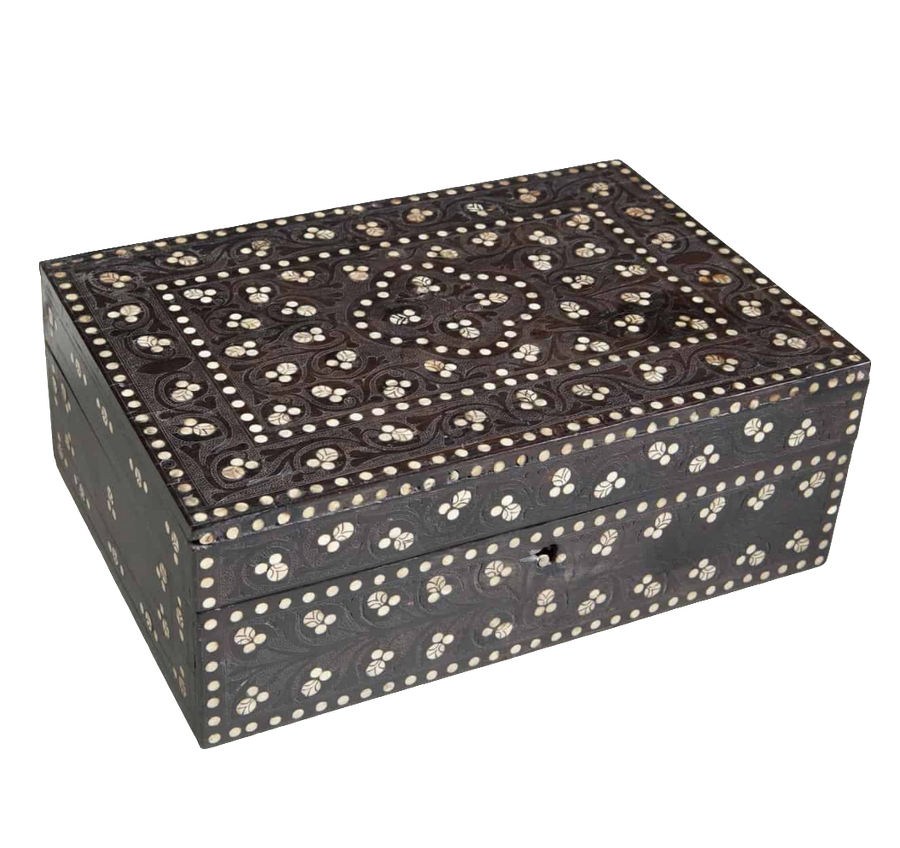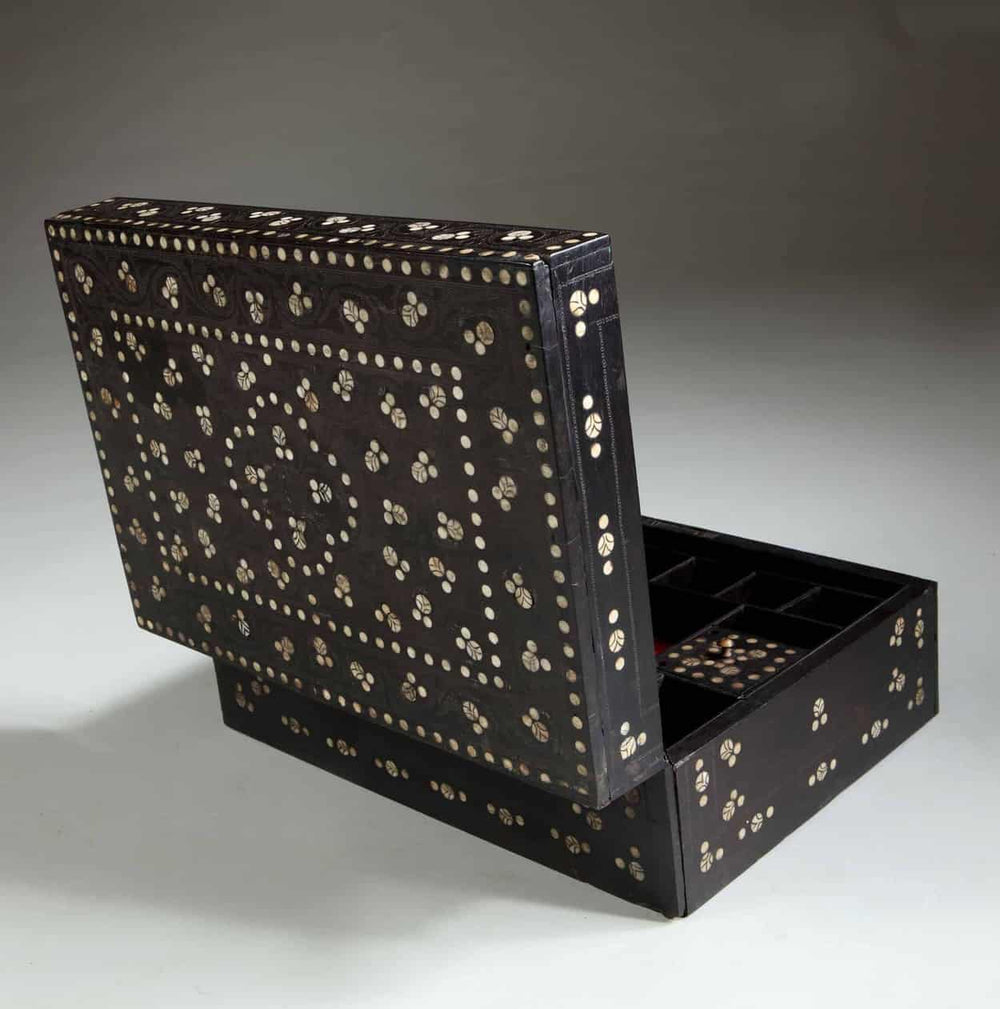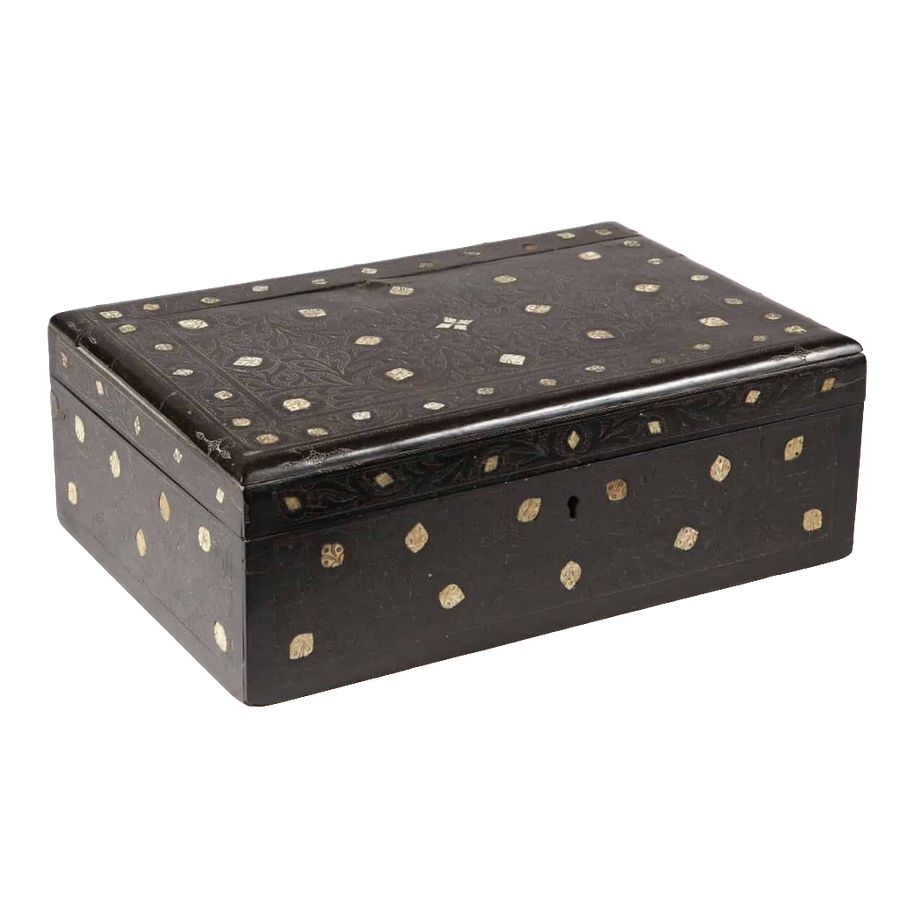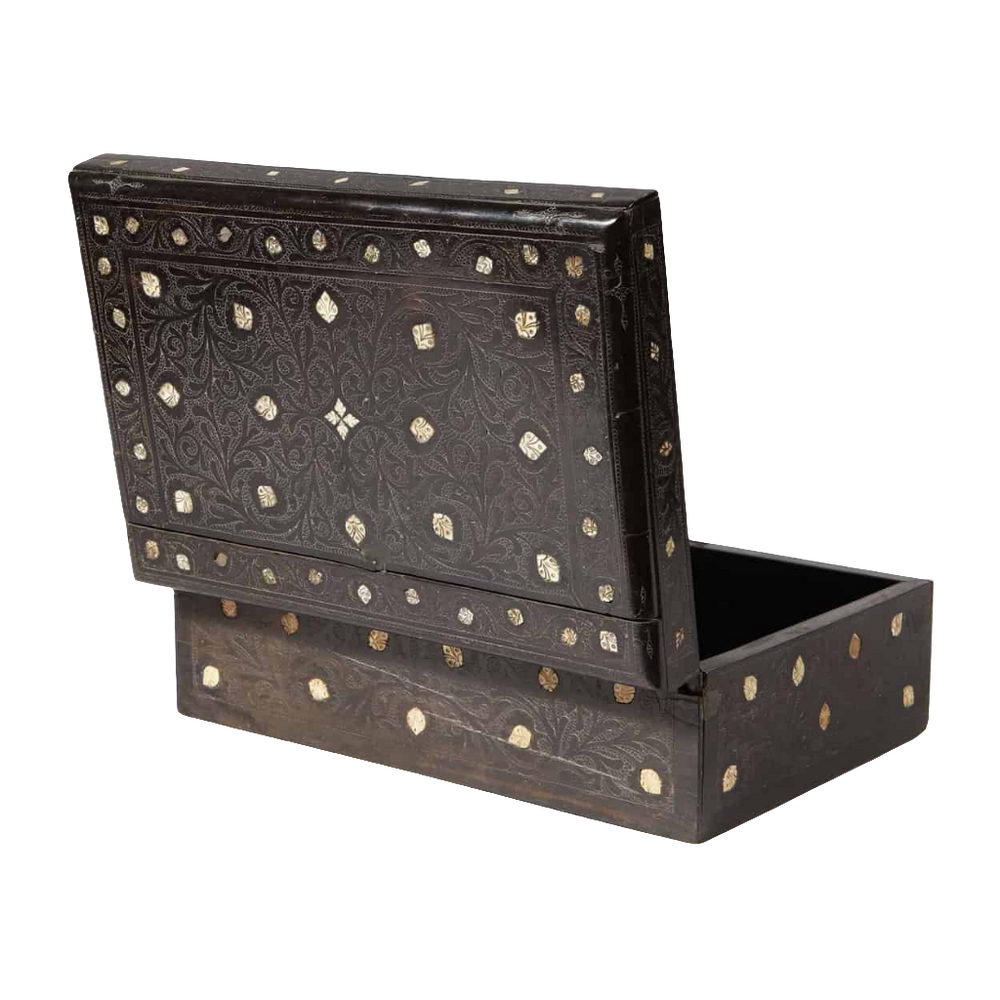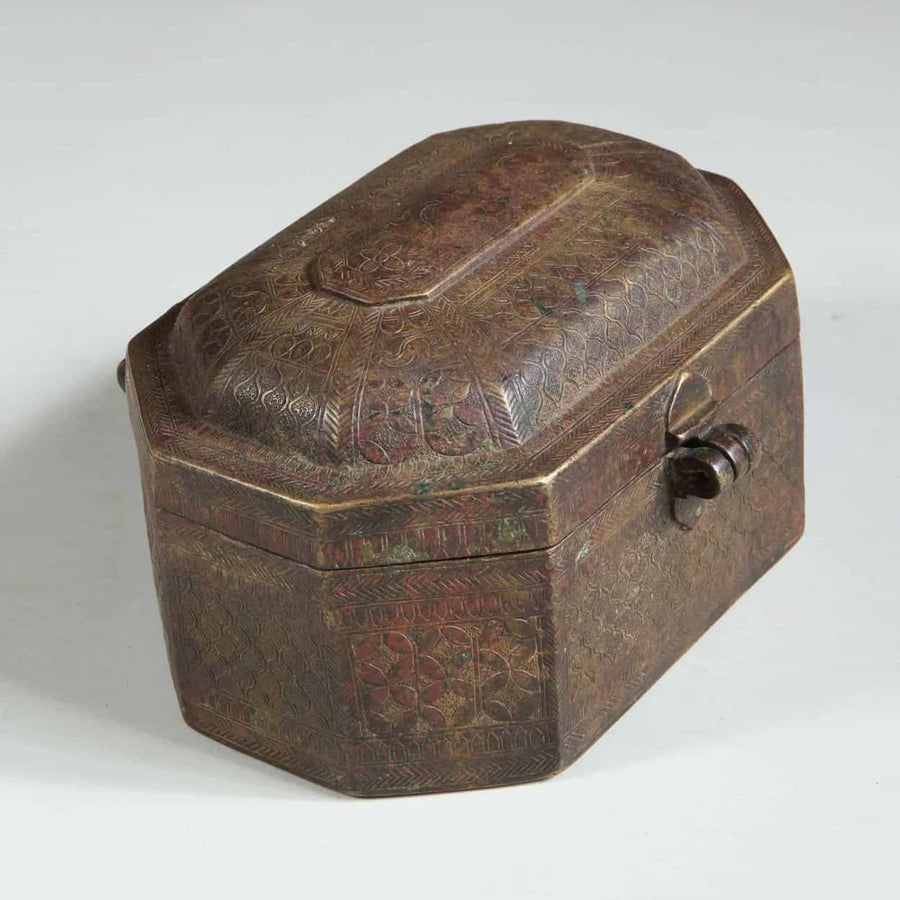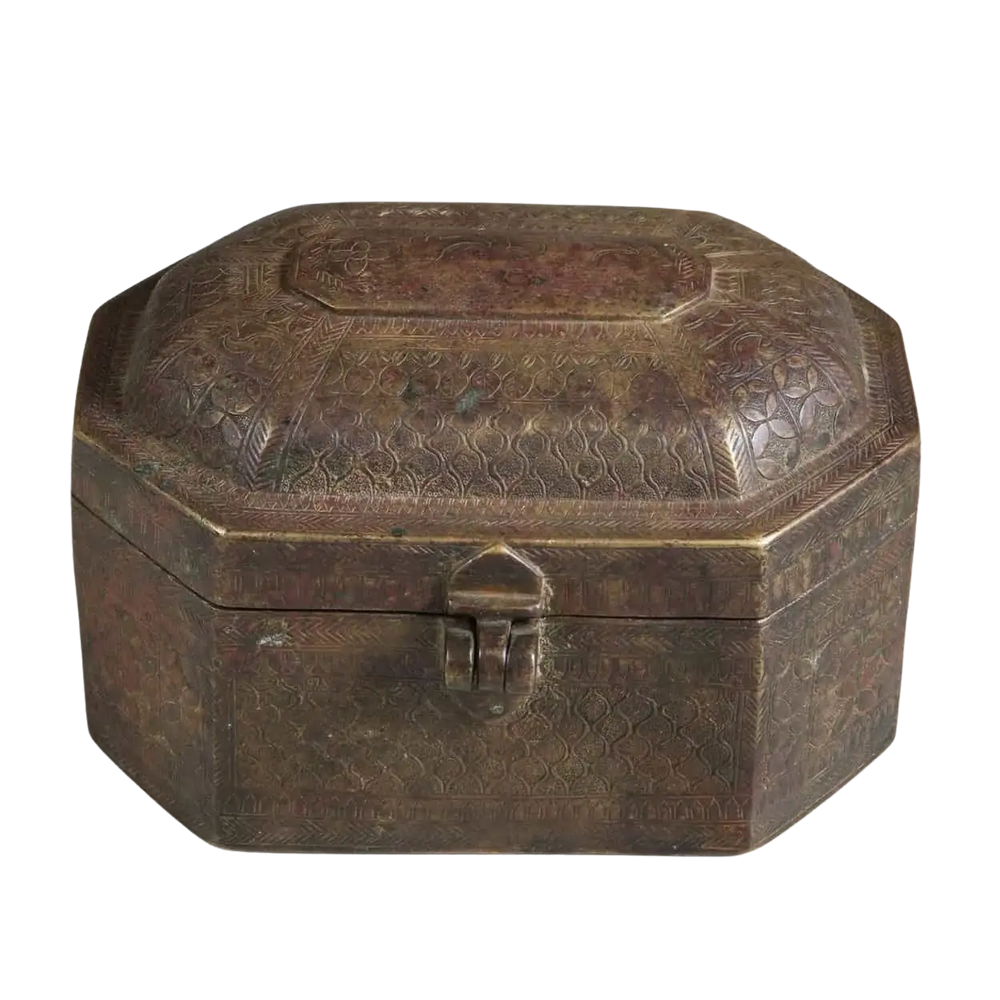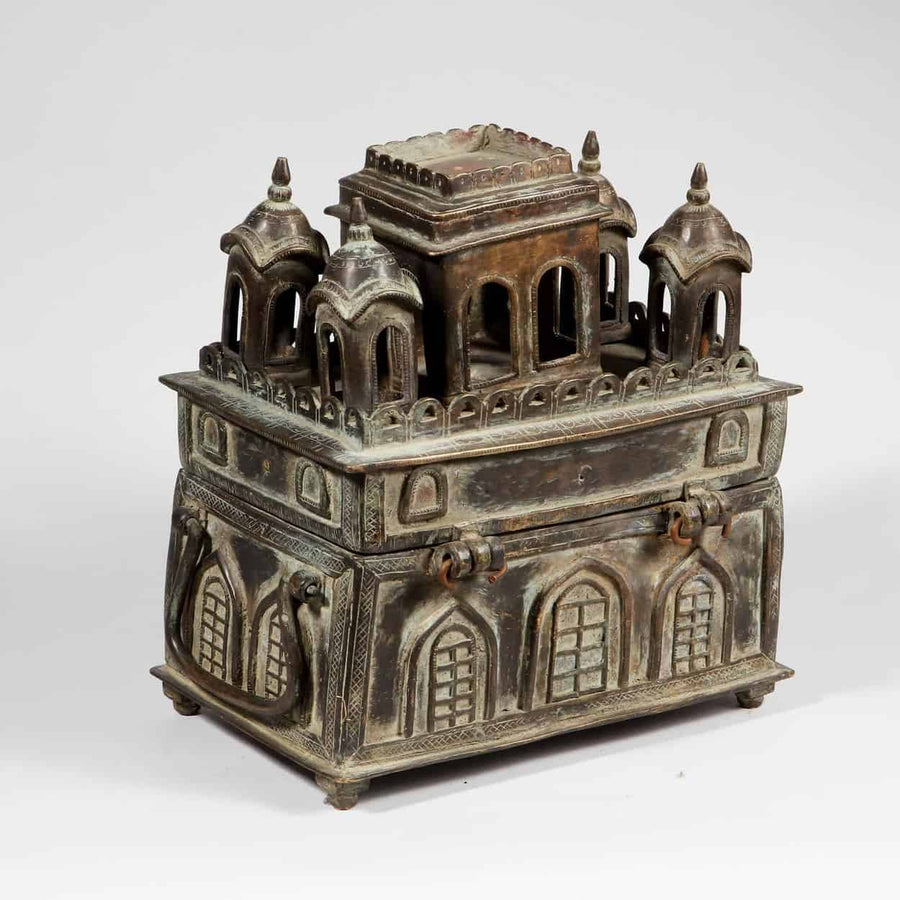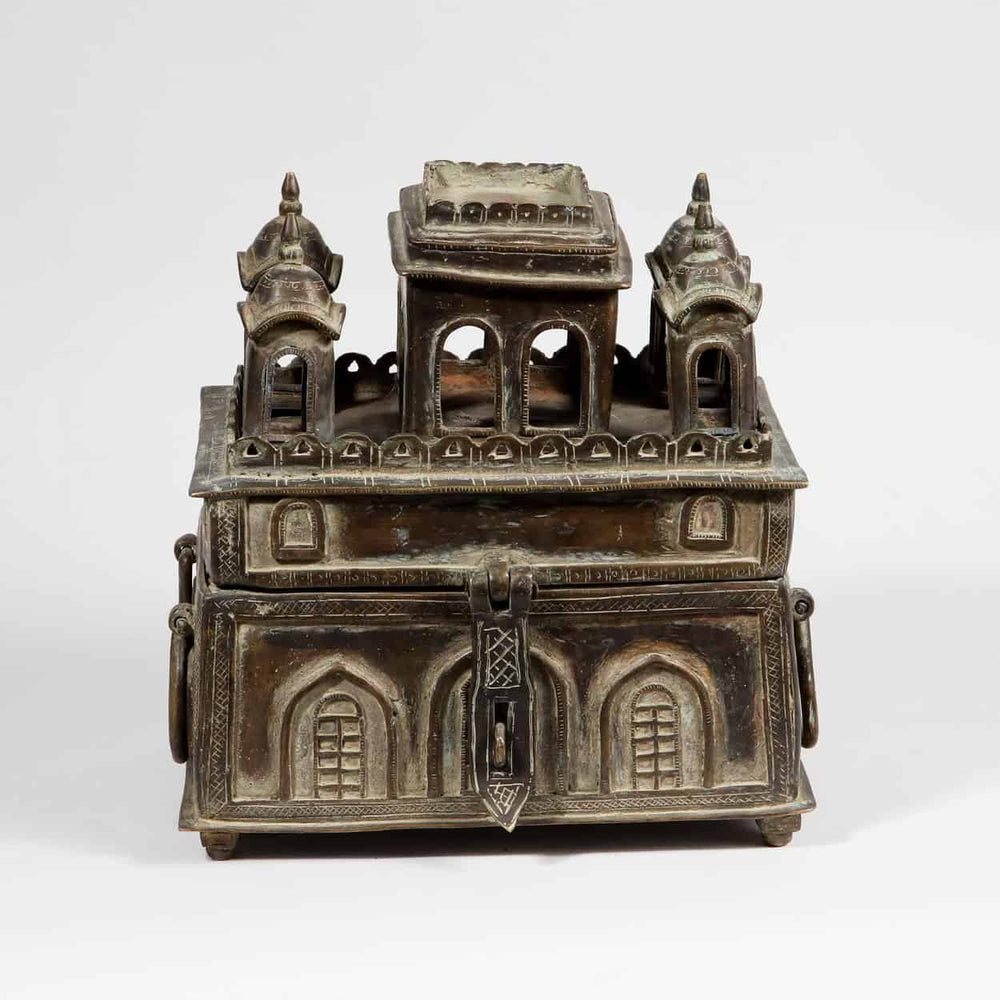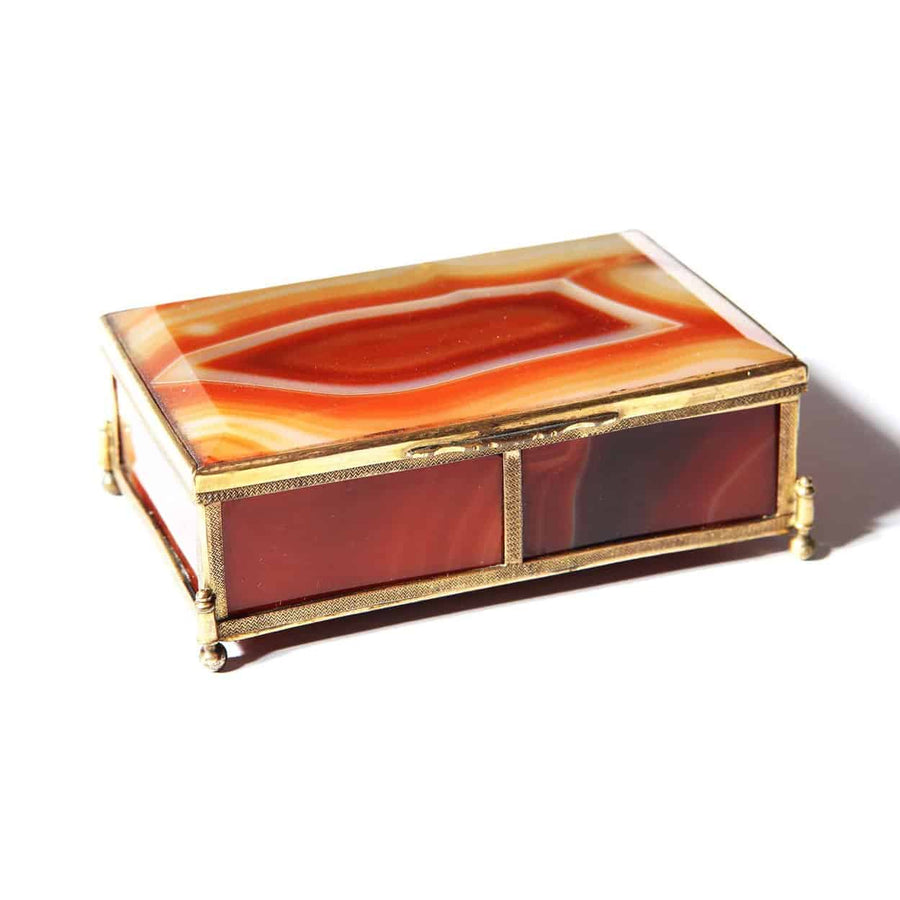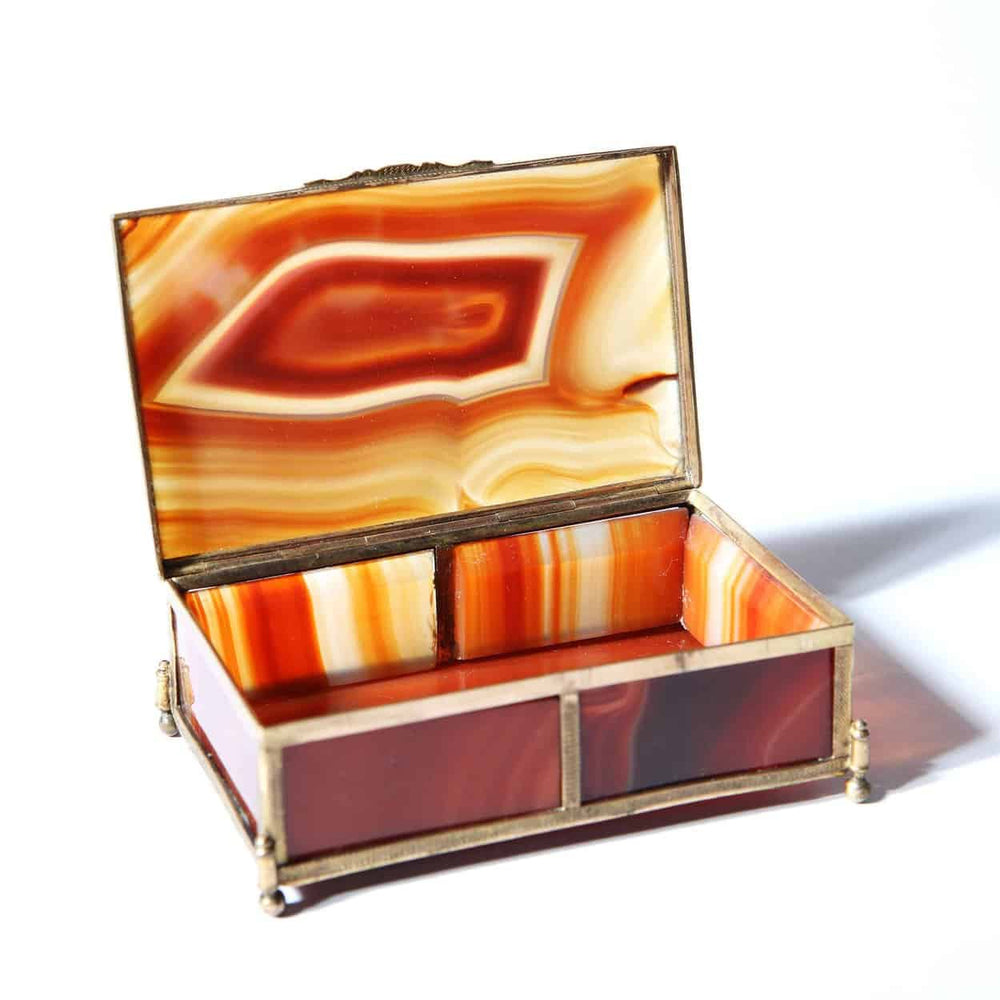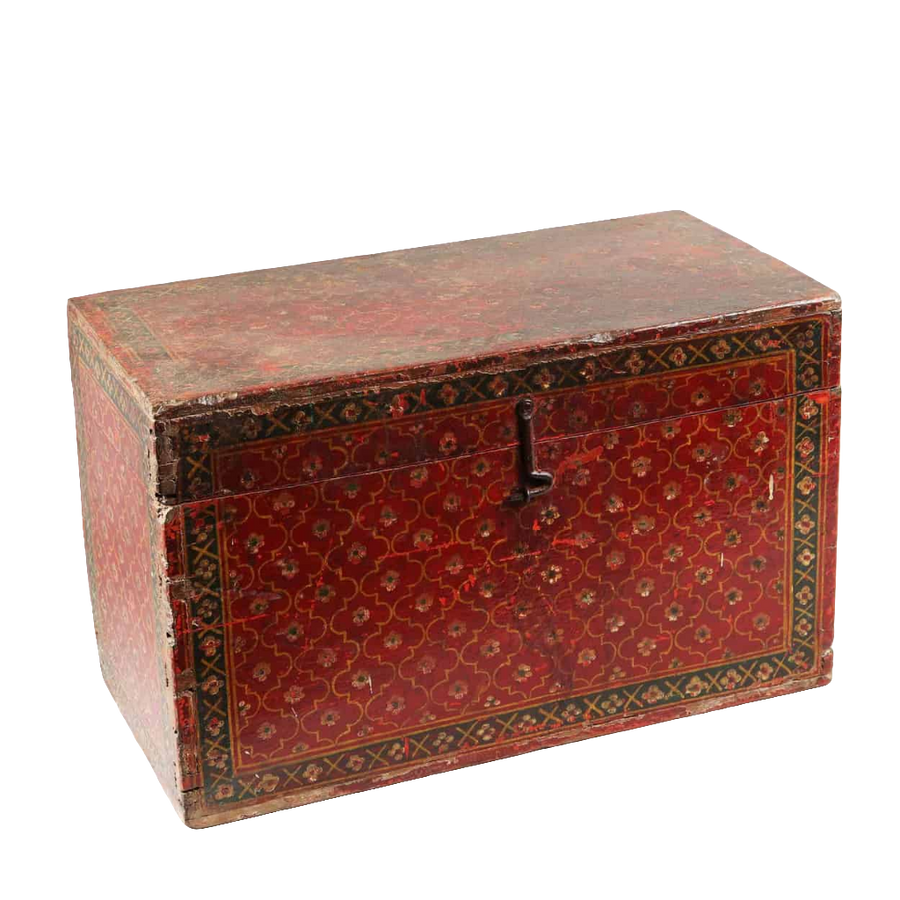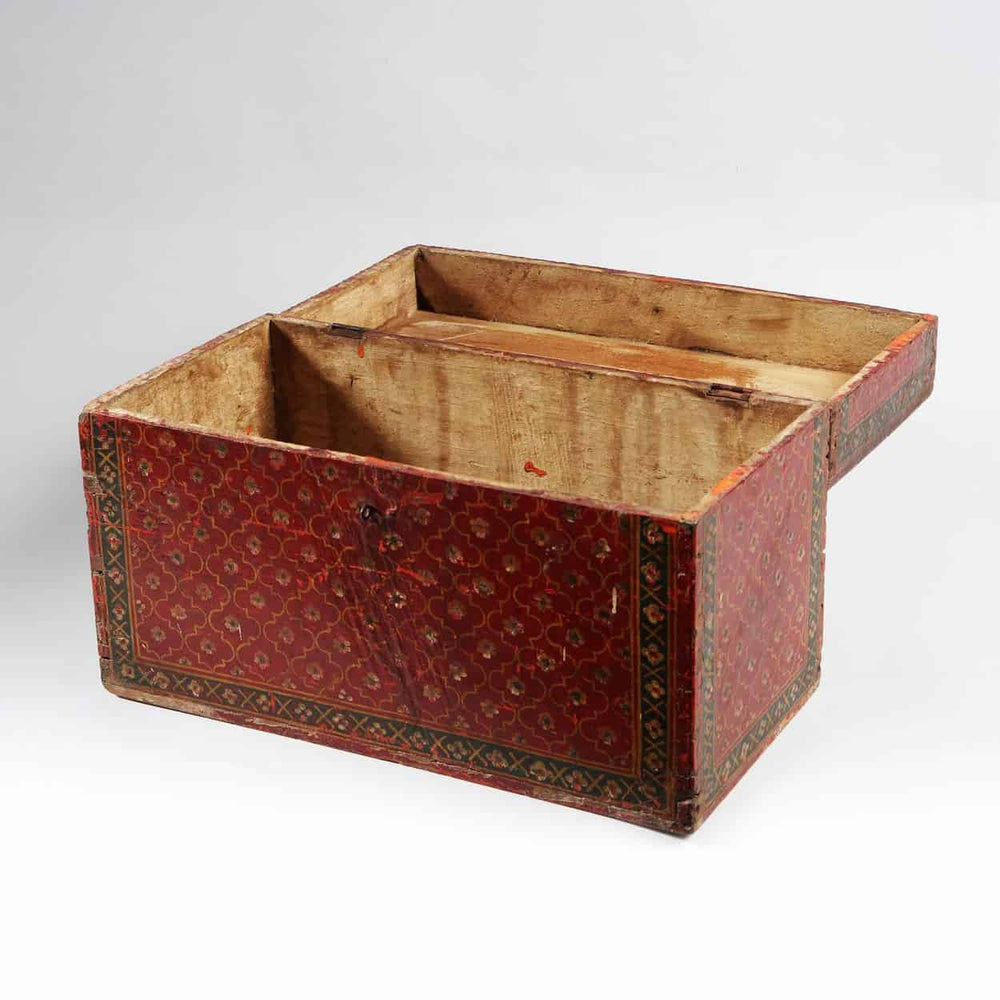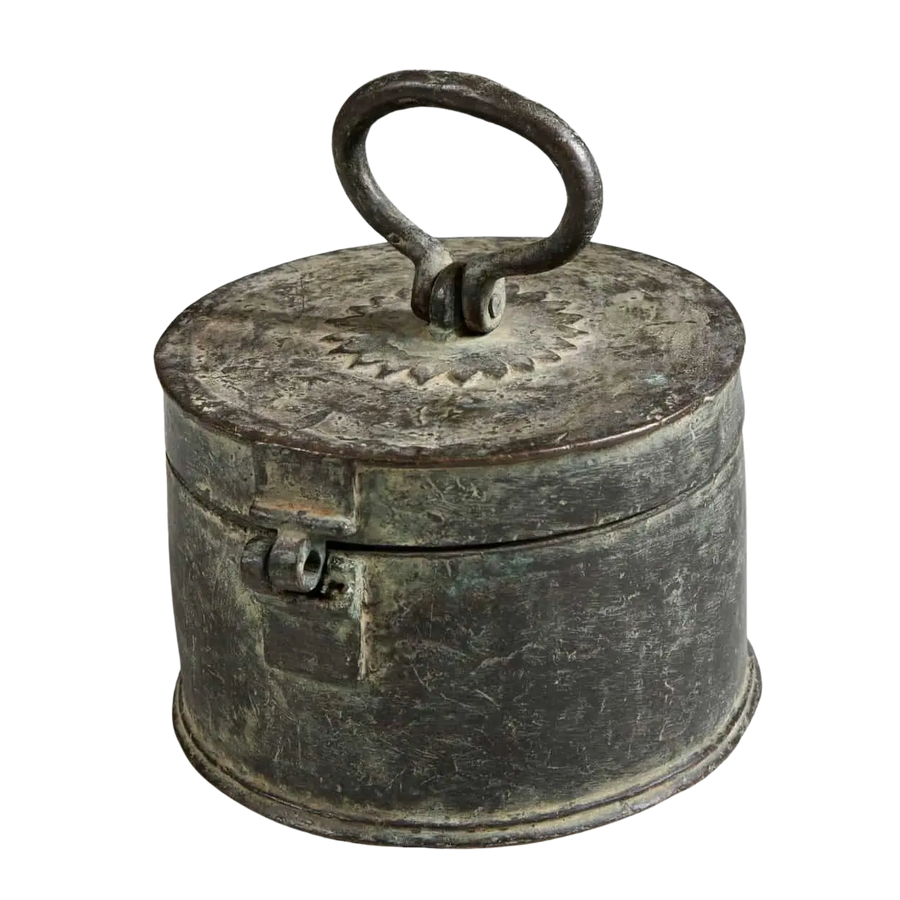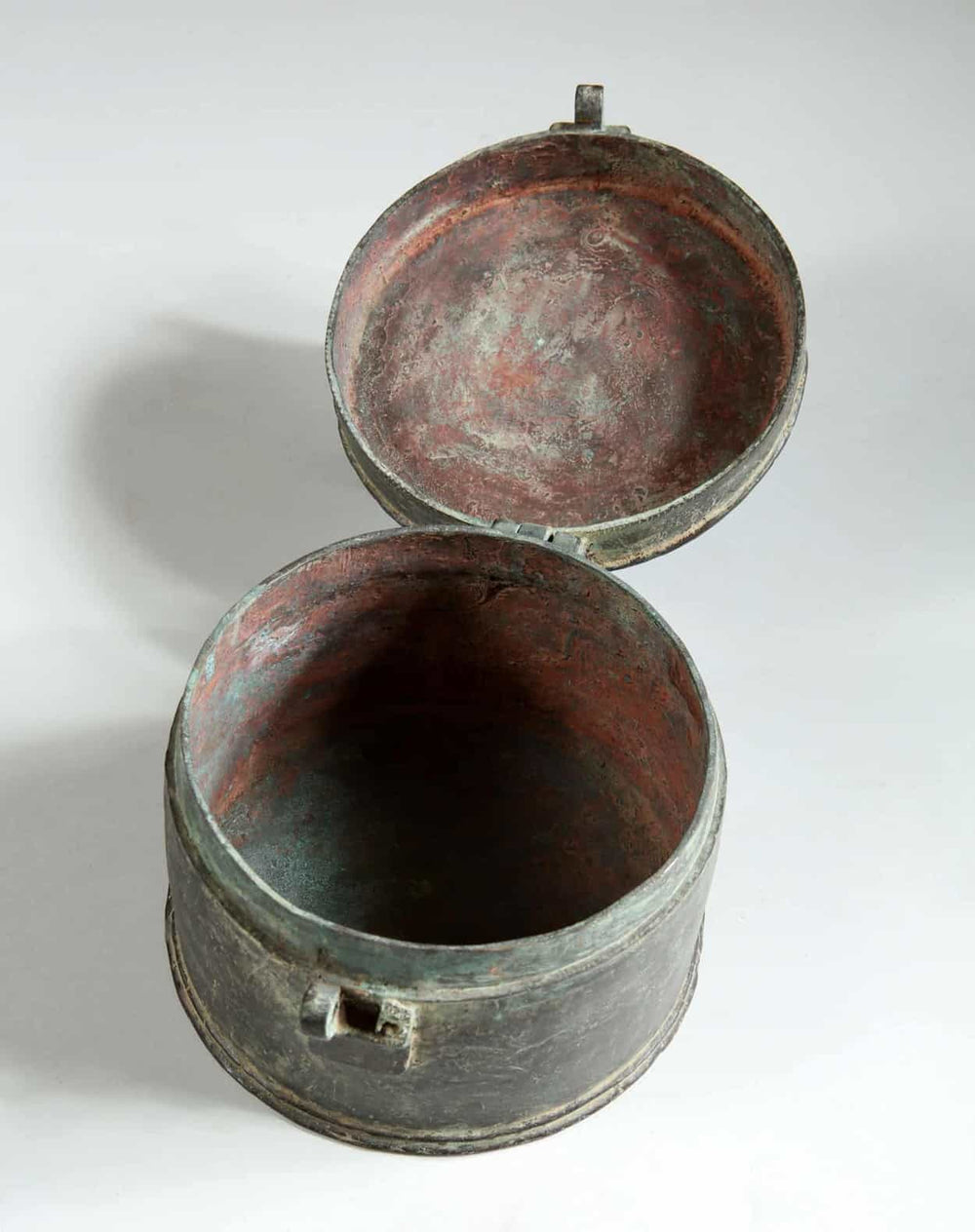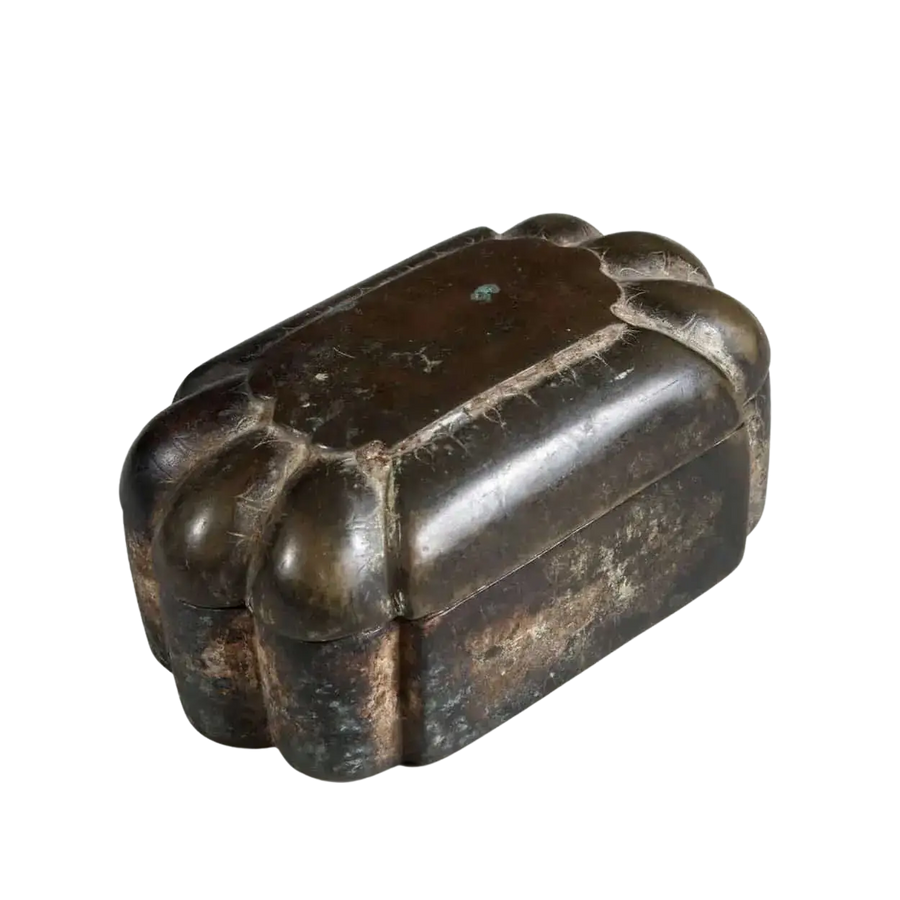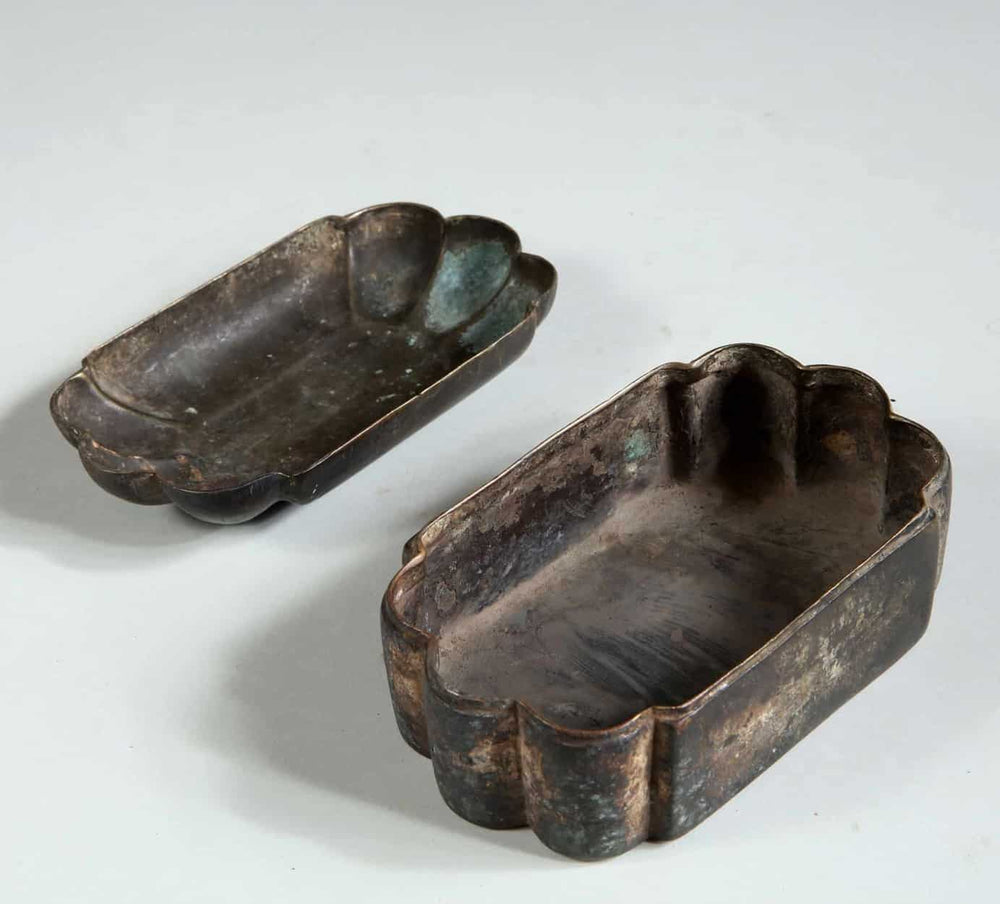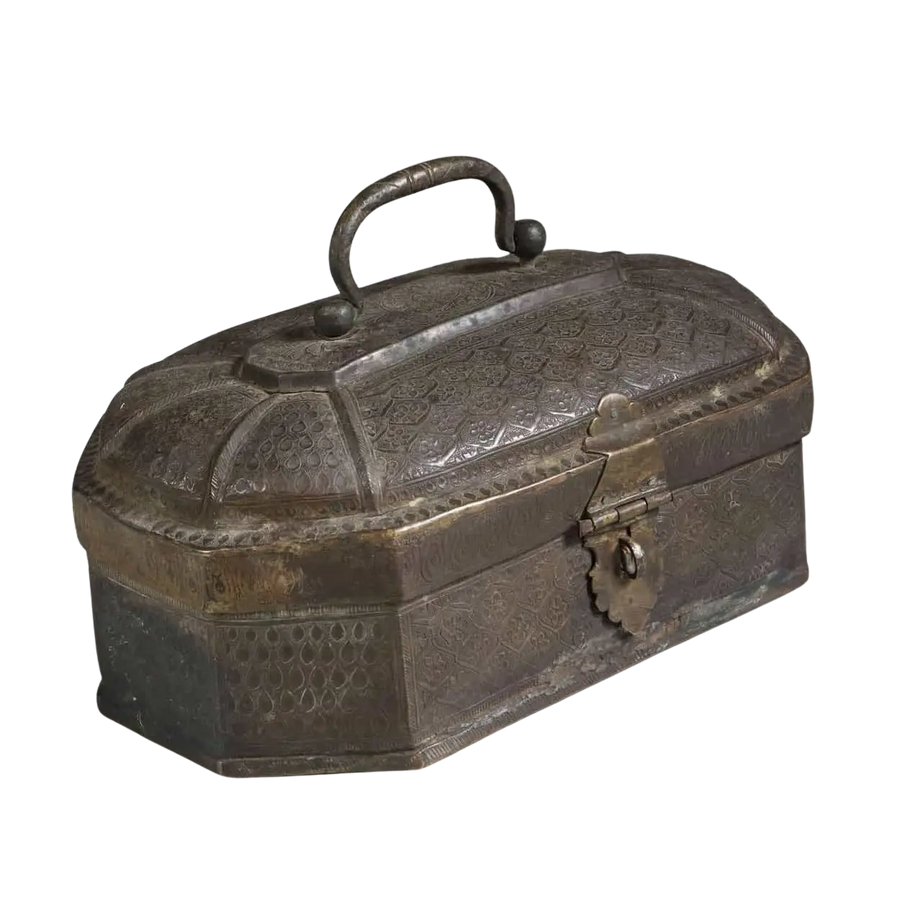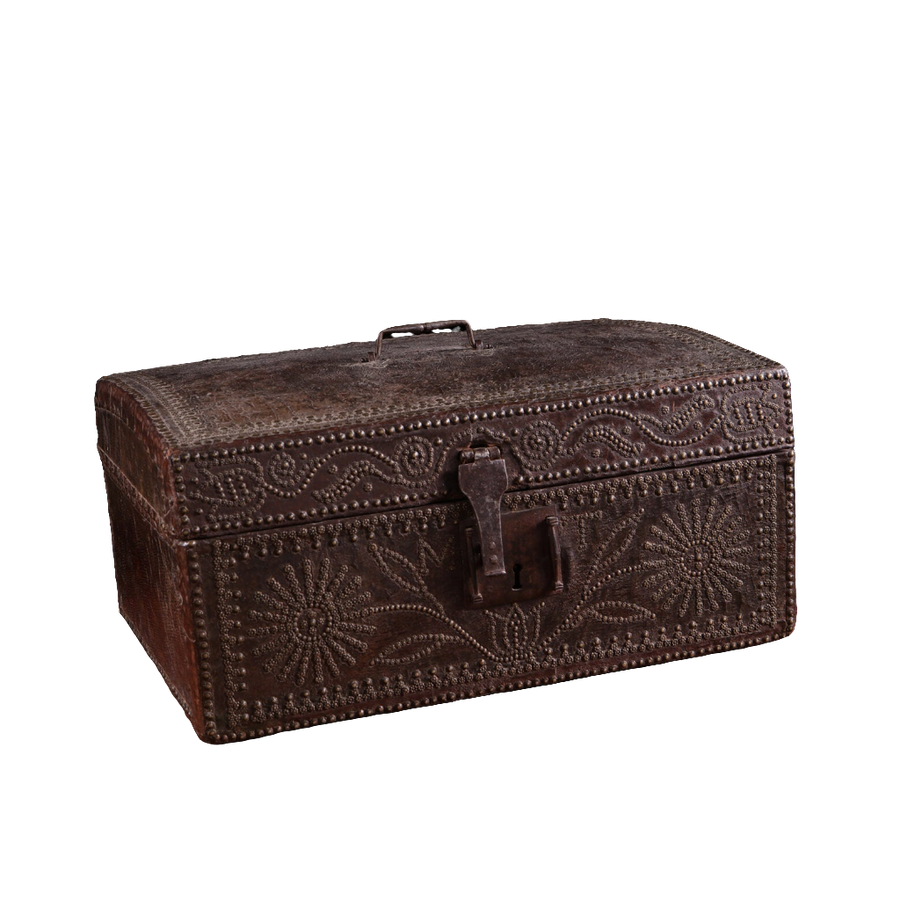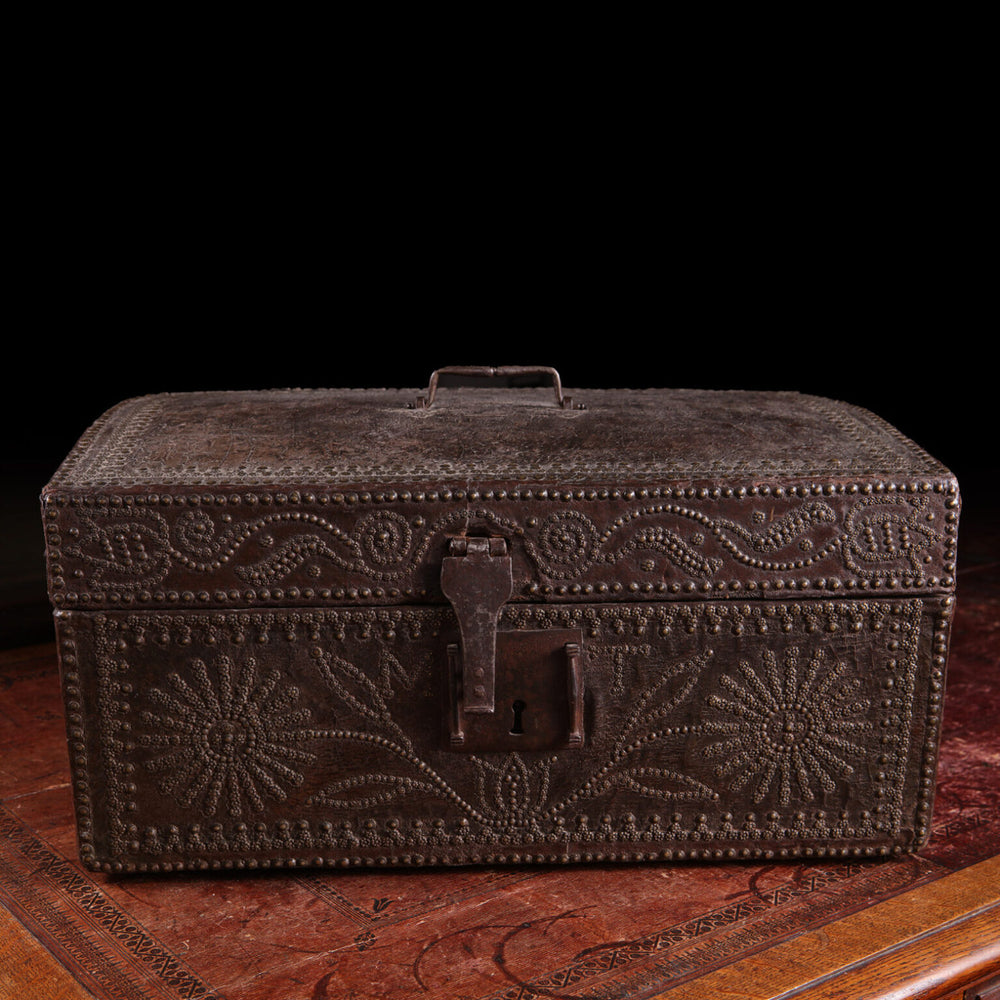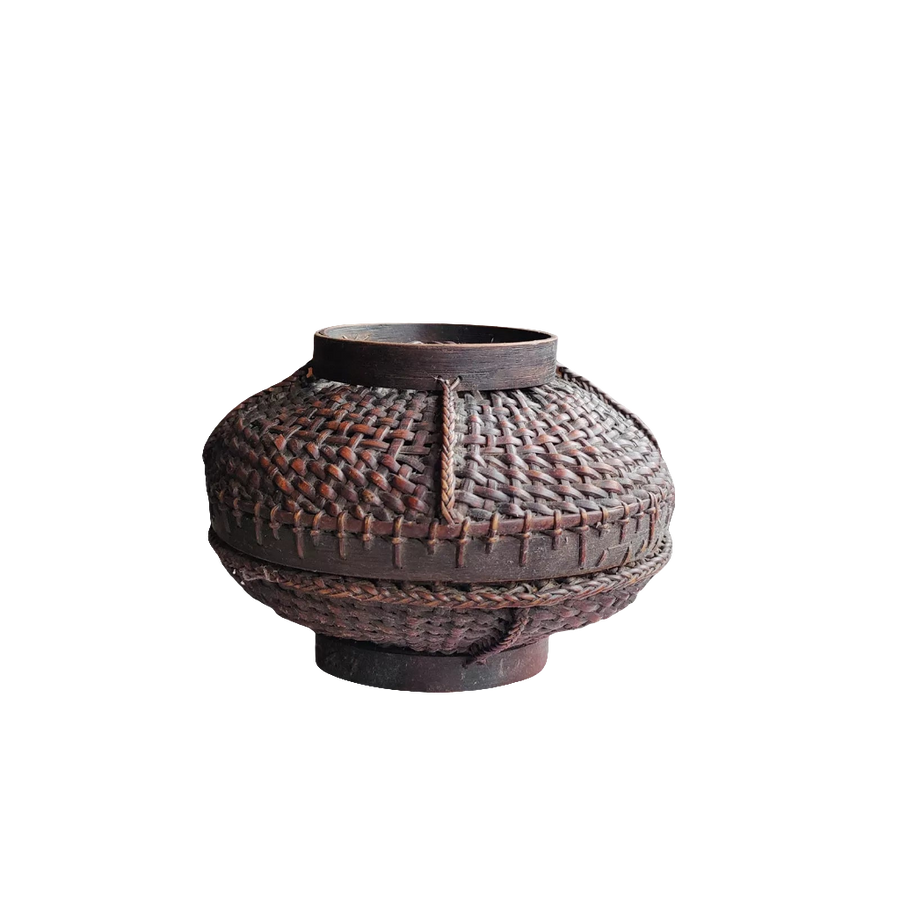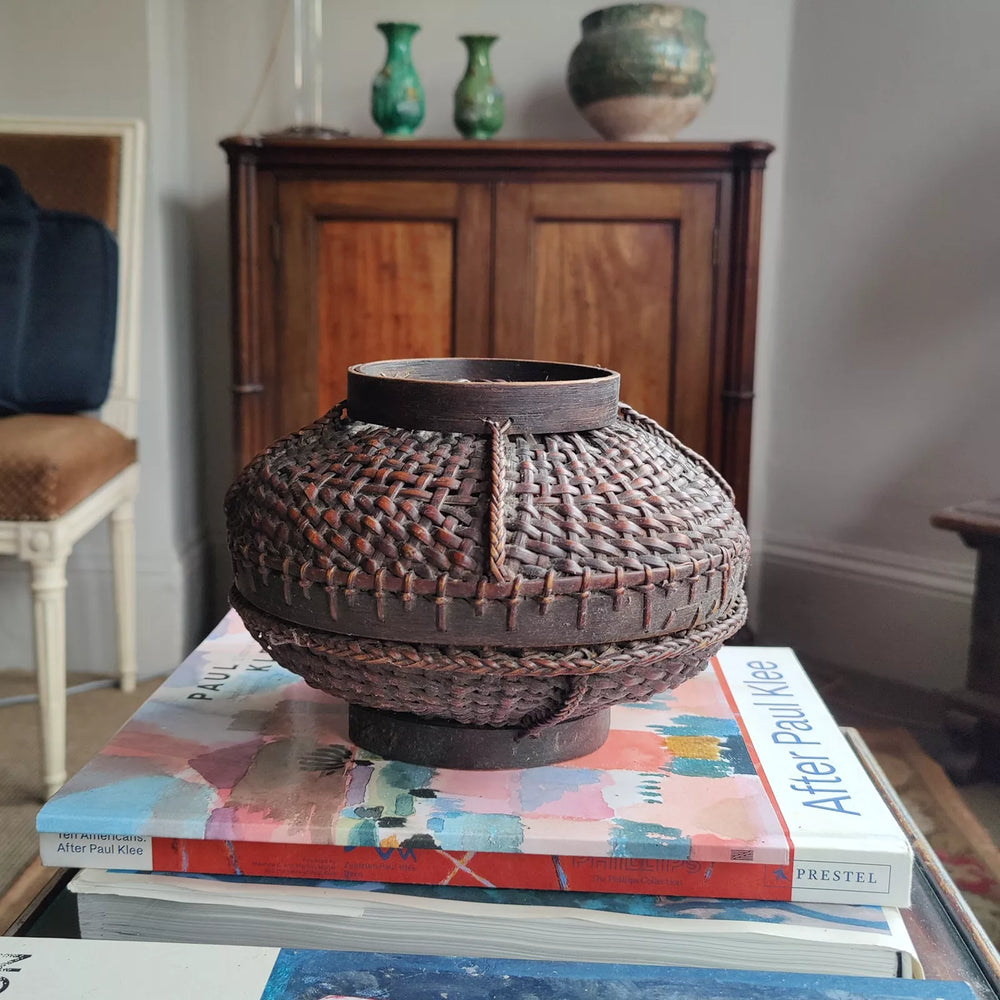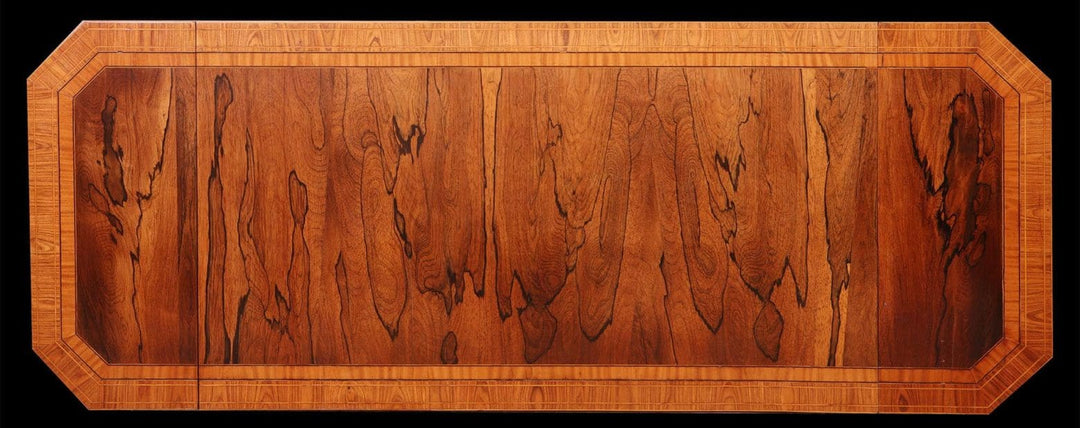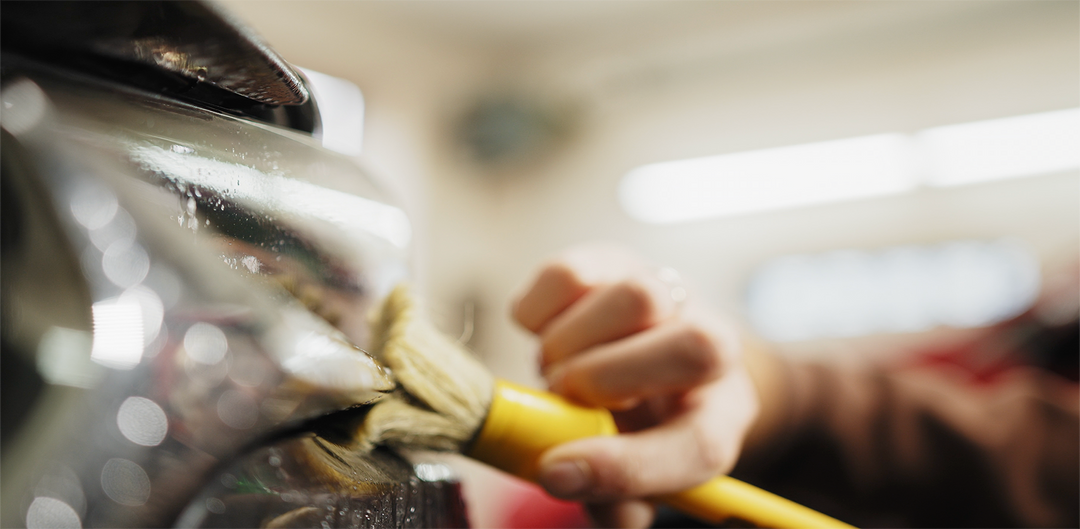
The Beauty of Utility
Ever-useful objects, antique boxes and tea caddies embody a language of both beauty and practicality. Spanning millennia and cultures, these containers were made to secure, transport, or display the most precious contents — from tea, jewels, and writing instruments to medicinal remedies or treasured keepsakes.
The 18th and 19th centuries mark a fascinating point of evolution. As global trade expanded, boxes became not only functional but also highly decorative objects that reflected social change and aesthetic refinement. English tea caddies, Anglo-Indian ebony boxes, and European shagreen apothecary cases all demonstrate the meeting of utility with exquisite craftsmanship.
Highlights of the Collection
-
17th-Century Italian Cabinet – A magnificent baroque masterpiece in ebony with lapis lazuli inlays (£58,000).
-
Anglo-Indian Tea Caddy, c. 1760 – Elegant export craftsmanship from the height of the British East India trade (POA).
-
Ottoman Hardstone & Gilt Tombak Casket – Luxurious gilded box of Islamic artistry (£9,500).
-
Rare Mughal Rosewood & Brass Inlaid Travelling Jewellery Casket – Early 19th century, Akbar Shah II (£8,500).
-
Mid 18th-Century Shagreen Apothecary Case – Roman travelling case with six glass bottles (£8,000).
-
Damascened Toledo Miniature Renaissance Cassone – Attributed to Plácido Zuloaga (£6,000).
-
Regency Leather Fitted Table Top Casket – A refined example of early 19th-century English design (£3,900).
-
Renaissance Style Silver & Lapis Lazuli Casket – Richly decorated with semi-precious stone (£3,400).
-
Indian Brass Chest – Large 19th-century Rajasthani chest of exceptional workmanship (£2,500).
-
Queen Mary Blue Enamel & Silver Box – A charming royal commemorative (£1,500).
Other highlights include Bohemian spa boxes, Anglo-Ceylonese ebony writing slopes, French travelling chests, and Indian lacquered boxes, each carrying both cultural history and timeless aesthetic appeal.
Why Collect Antique Boxes & Tea Caddies?
-
Cross-cultural craftsmanship: From Mughal India to Regency England, each box reflects its era’s artistry.
-
Functionality: Tea storage, travel apothecaries, jewellery caskets — these pieces were practical luxuries.
-
Symbol of refinement: Displayed in drawing rooms, cabinets, or desks, they spoke to wealth and taste.
-
Collectible diversity: Wide ranges of form and material — from shagreen and lapis lazuli to silver, ebony, and enamel.
Frequently Asked Questions (FAQ)
What were tea caddies used for?
Tea was a prized luxury in the 18th century, stored in beautifully crafted boxes or caddies to protect its freshness and to signal social refinement.
What materials are common in antique boxes?
Materials include ebony, rosewood, shagreen, enamel, brass, silver, and hardstones such as lapis lazuli or carnelian.
Are these boxes functional today?
Yes. Many can still be used to store jewellery, stationery, or small valuables — though most are preserved as collectors’ items.
What is the most collectible type of antique box?
Highly prized examples include Mughal and Anglo-Indian boxes, shagreen apothecary cases, Renaissance cassones, and enamel tea caddies.
Do you offer boxes suitable for modern interiors?
Absolutely. Their scale and elegance make antique boxes adaptable to both traditional and contemporary settings.
Do you ship internationally?
Yes. We ship securely worldwide using fine art shippers, with full insurance and museum-standard packing.
✨ Explore Nicholas Wells Antiques’ collection of Boxes & Tea Caddies – where function meets artistry, and every object tells a story of craftsmanship, travel, and refinement.




